Best wireless earbuds 2025: top pairs tested by our reviewers
The best wireless earbuds you can buy right now, all reviewed and recommended by our team of audio experts
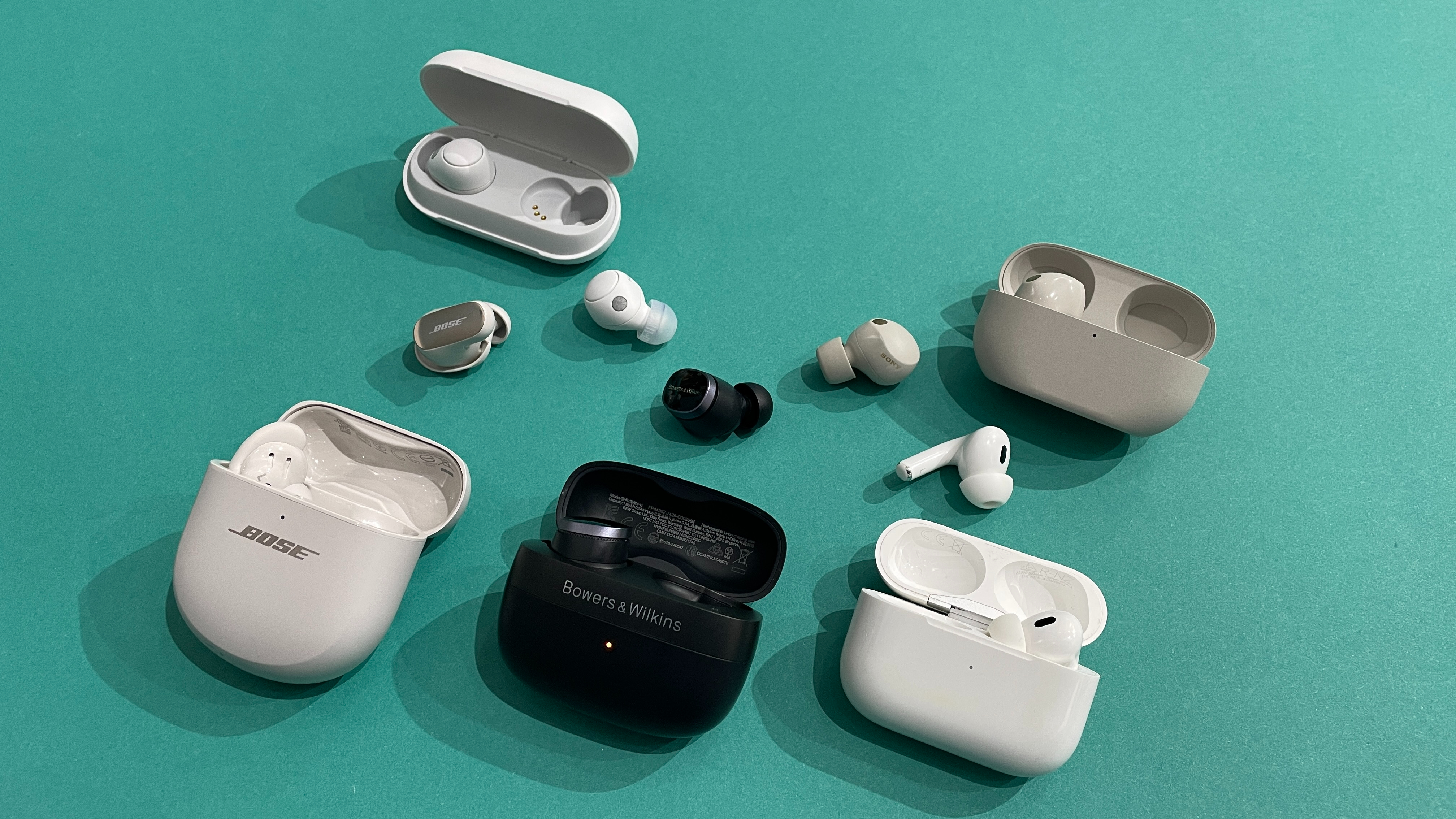
Welcome to the What Hi-Fi? guide to the best wireless earbuds on the market right now. We are already into March and while there hasn't been too much to report in terms of big wireless earbud launches so far this year, we are starting to see a few leaks and rumours emerge concerning potential new models which we touch on below.
So, what does a pair of wireless earbuds need to do to be considered for our list? Our team assesses multiple factors when deciding which models make the final cut, including (among others) comfort, ease of use, call quality and battery life. Ultimately, though, sound quality and value for money are top of our list.
Our experts have been testing audio and video products for close to 50 years and we have been testing wireless earbuds ever since the product category first emerged nearly a decade ago. We have reviewed and continue to review models from the biggest brands in the space, such as Apple, Bose and Sony. We cover a huge range of prices, which means our knowledge in this field is unrivalled. Give us your requirements and we are confident will be able to recommend a pair which ticks all your boxes.
Using our huge database of wireless earbuds reviews and combining it with the opinions of our experts we have narrowed things down to bring you this list of the very best pairs currently on the market. These are the cream of the crop and each one is a class leader in its own unique way.
Our star rating will give you some insight into just how we feel about a particular pair but you'll also find thorough overviews on all the models listed here below. We have also flagged pairs that have won a What Hi-Fi? Award which is another stamp of approval and guarantees you are getting the best buds at their level.
This month we have seen new reports that Sony is planning a successor to the best mid-price wireless earbuds on this page, the WF-C700N. The rumoured Sony WF-C710N will have big shoes to fill so we'll be keeping a close eye on any developments.
Looking for over-ears? Check out our best wireless headphones guide instead.
Recent updates
March 14th: checked pricing and availability of all earbuds on the list. We've reviewed the Sony LinkBuds Open (WF-L910) and awarded them four stars but they don't make it onto our list. We've also updated our Sony WF-C700N entry to reflect leaks about a potential successor.
9 Best Wireless Earbuds
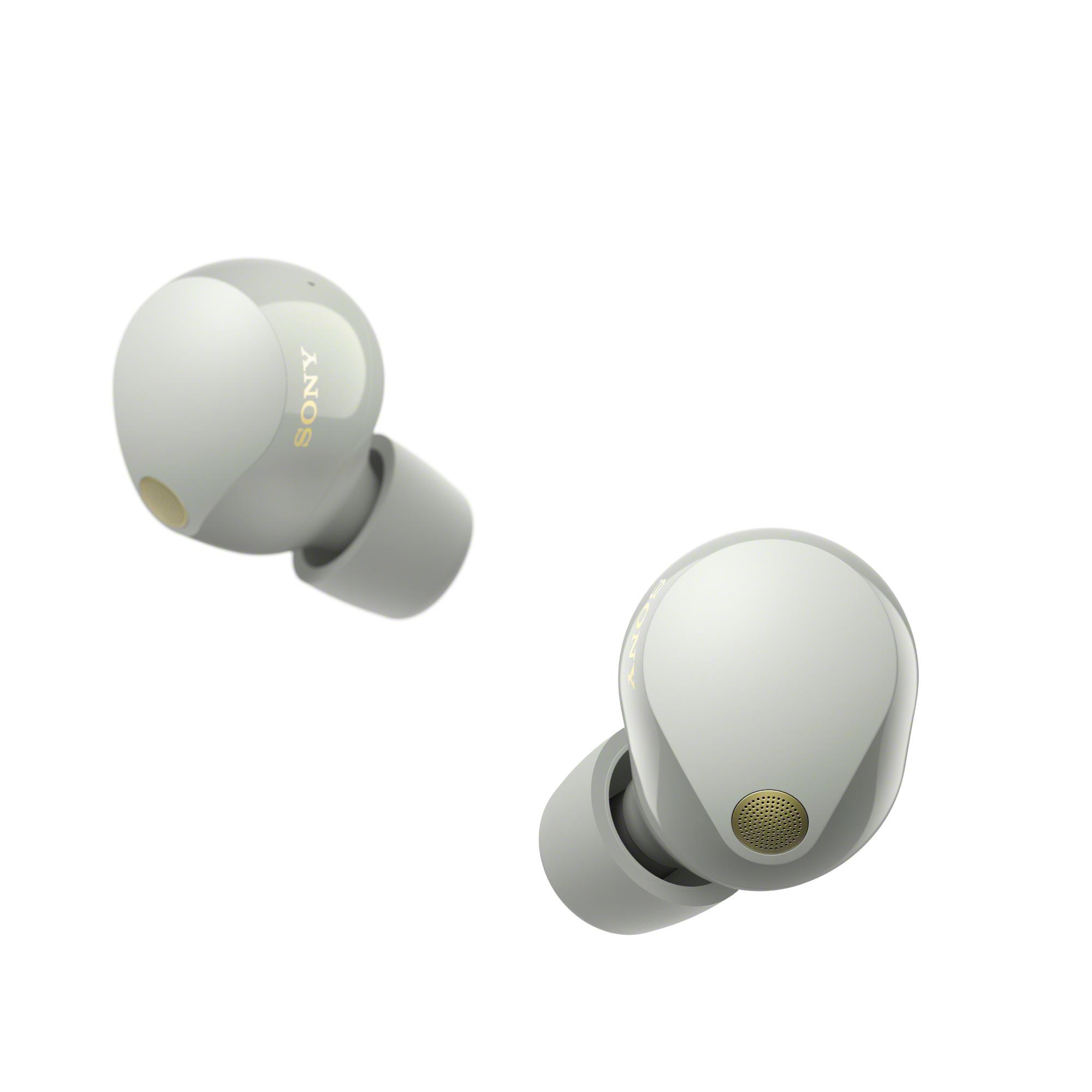
The best wireless earbuds overall
The WF-1000XM5 are the current benchmark for wireless earbuds thanks to their fantastic blend of performance and features. As an all-round proposition, they're tough to beat.

The best cheap wireless earbuds
If you're looking for some of the cheapest five-star true wireless earbuds we've tested, then make a beeline for the Earfun Air. They deliver a great sonic performance for very little money.
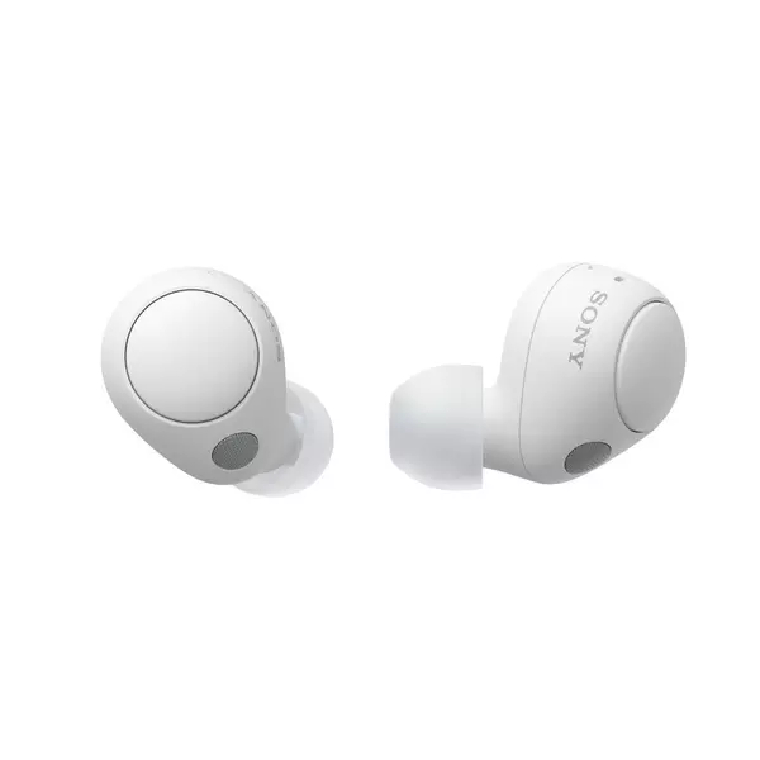
The best mid-price wireless earbuds
These five-star Sonys tick multiple boxes, with good ANC, excellent sound quality, and impressive comfort levels in an attractively-priced package. A fine effort from the Japanese tech giant.
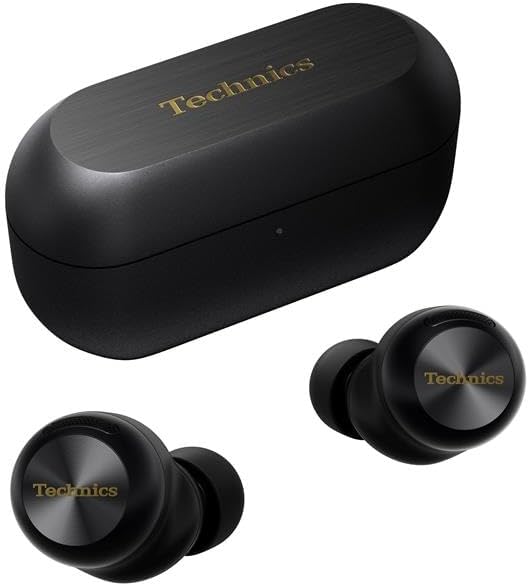
The best premium wireless earbuds
Technincs' flagship wireless earbuds are impressive performers, capable of giving the likes of Bose and Sony a real run for their money. Their combination of comfy design, useful features and great sound quality deserves your attention.
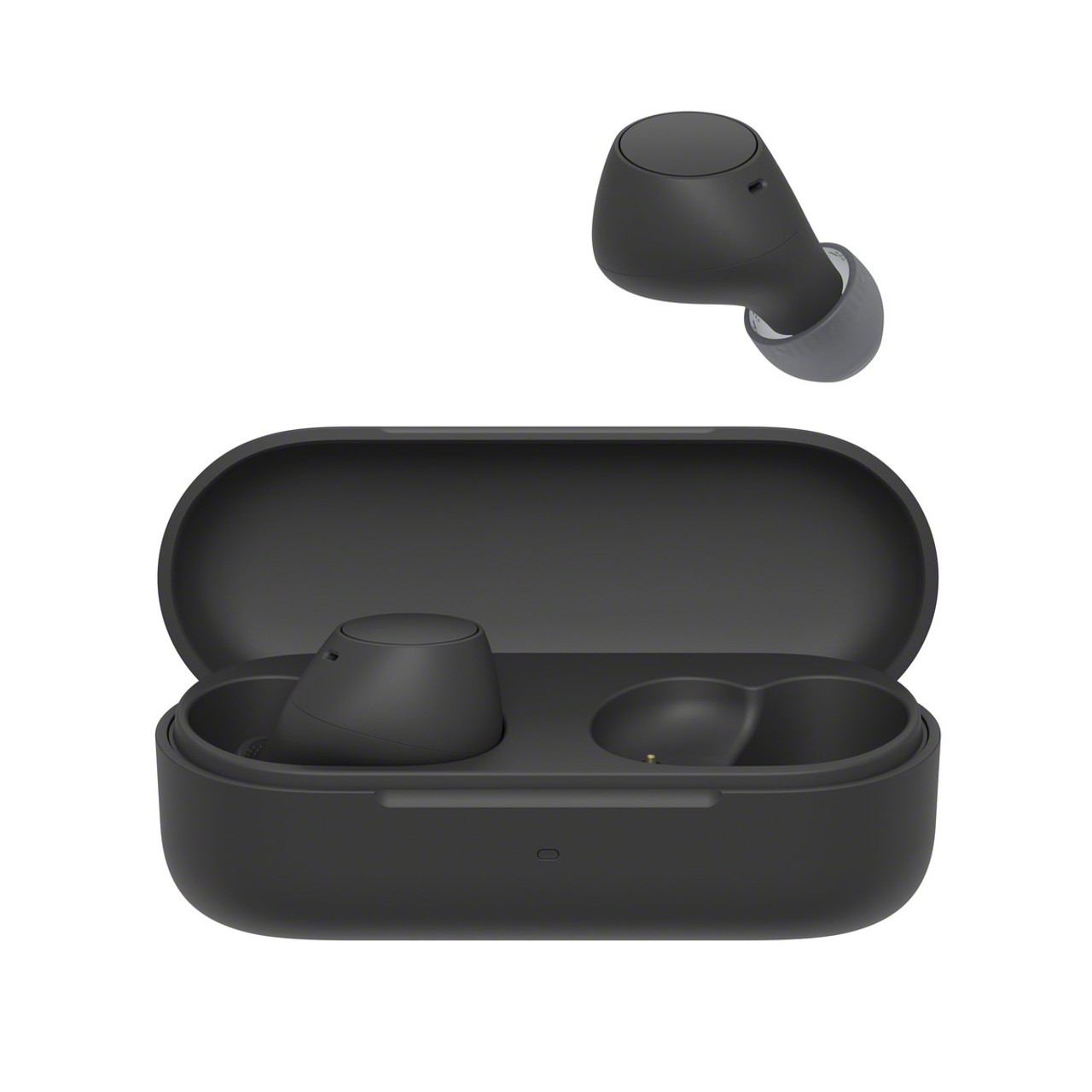
The best wireless earbuds for battery life
With 11 hours of juice available per charge, the WF-C510 should cope easily with long listening sessions. There's no noise-cancelling on board, but the brilliant sound quality and budget price make these earbuds hard to ignore.
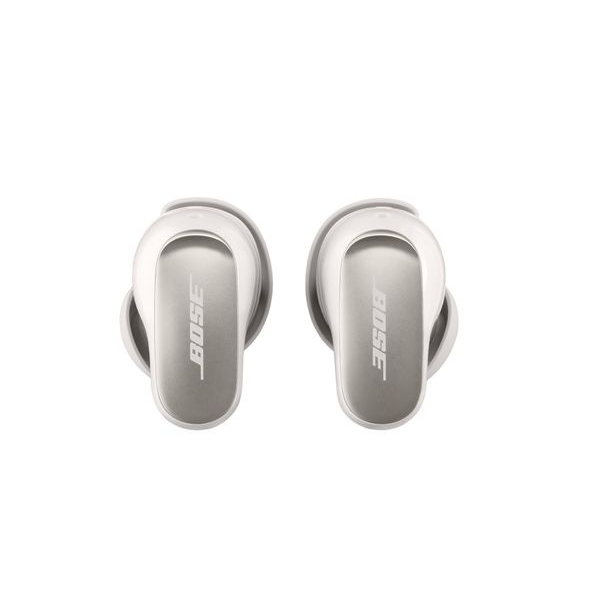
The best noise-cancelling wireless earbuds
These excellent noise-cancelling earbuds are Bose's finest to date. They cut out external chatter with ease which leaves you free to enjoy their comfy fit and excellent sound quality. Expensive, but worth it.
Load the next product… ↓
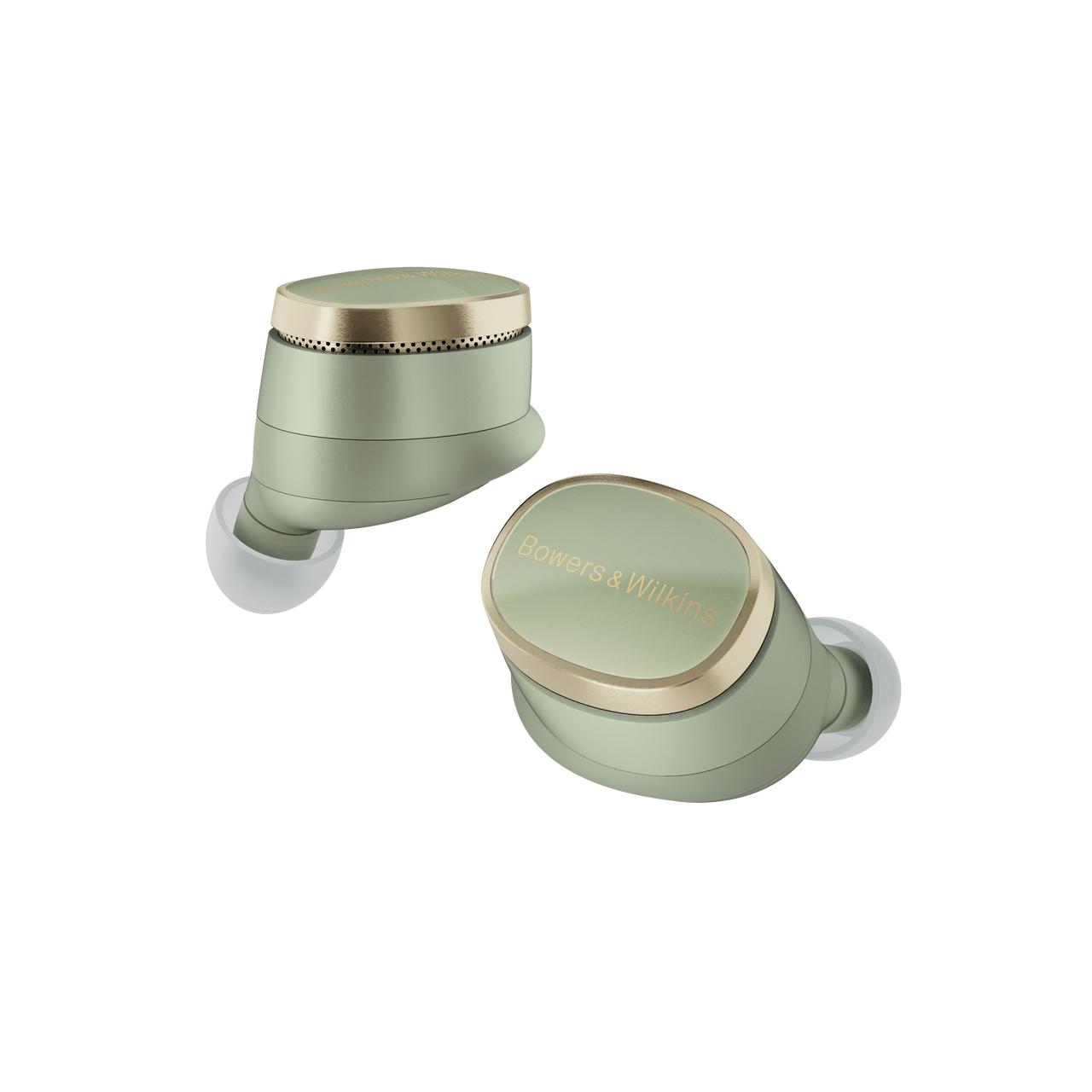
The best audiophile wireless earbuds
Bowers & Wilkins’ new flagship wireless earbuds perform levels above most pairs we’ve tested. Their detailed sound is a joy to listen to and they deliver a fine user experience and great build quality which justify their price tag.

The best AirPods
The AirPods Pro 2 are Apple's finest wireless earbuds to date. They work seamlessly with your iPhone while sound quality and noise-cancelling have gone up a notch from the previous version. Apple fan? These buds are a no-brainer.

The best wireless earbuds for running
JBL’s Live Pro 2 TWS are serious all-rounders if you're into exercising, with a solid design, comfortable fit and engaging audio performance.

Hi. I'm Deputy Editor of What Hi-Fi? and have been testing headphones, hi-fi kit and TV/AV products for the best part of 18 years. I use wireless earbuds every day and have heard and tested hundreds of pairs over the years from a huge number of brands. Every pair on this list deserves a spot based on their all-round ability and price and I'm sure they will all bring you hours of listening enjoyment.
The best wireless earbuds overall
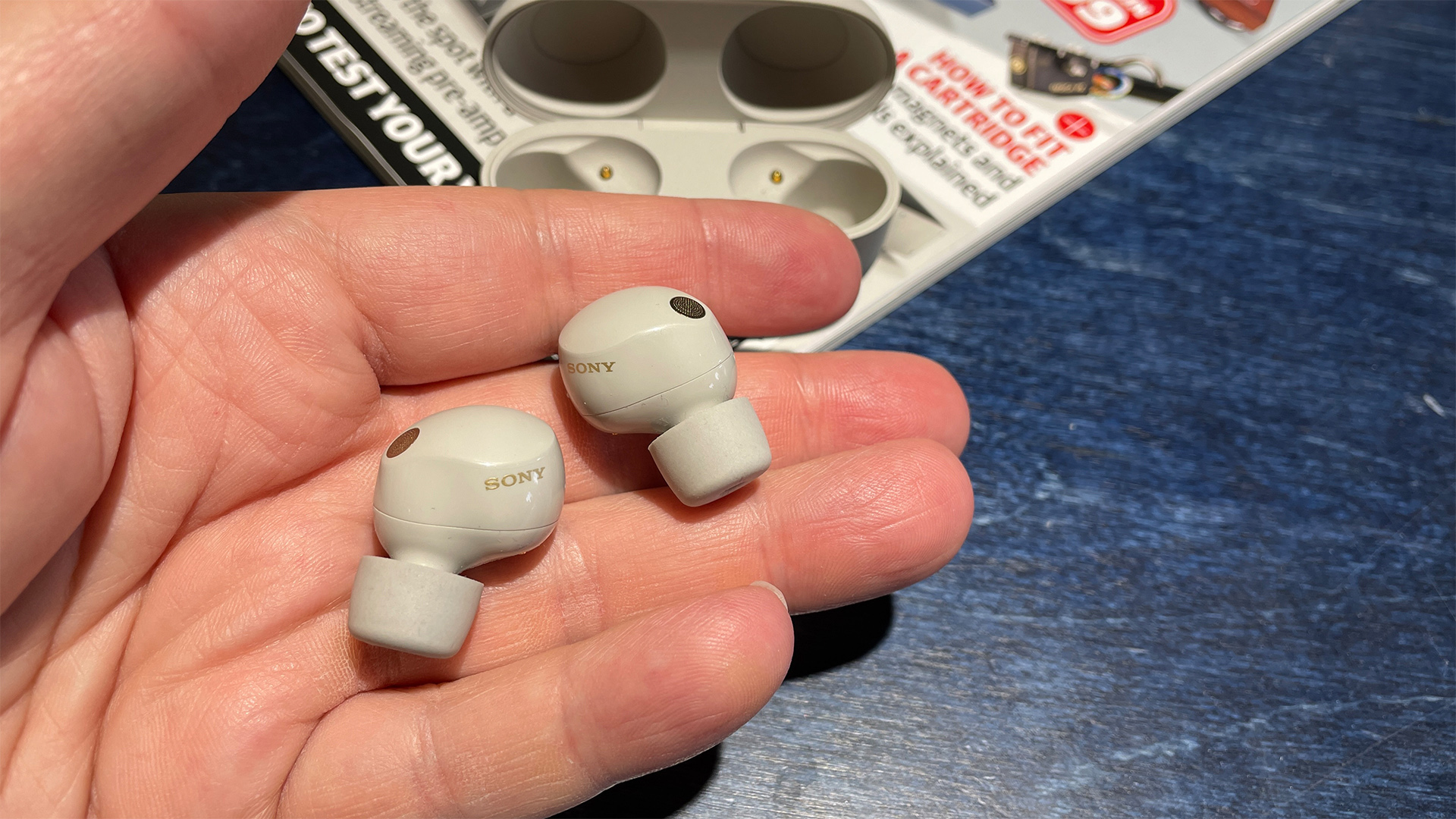
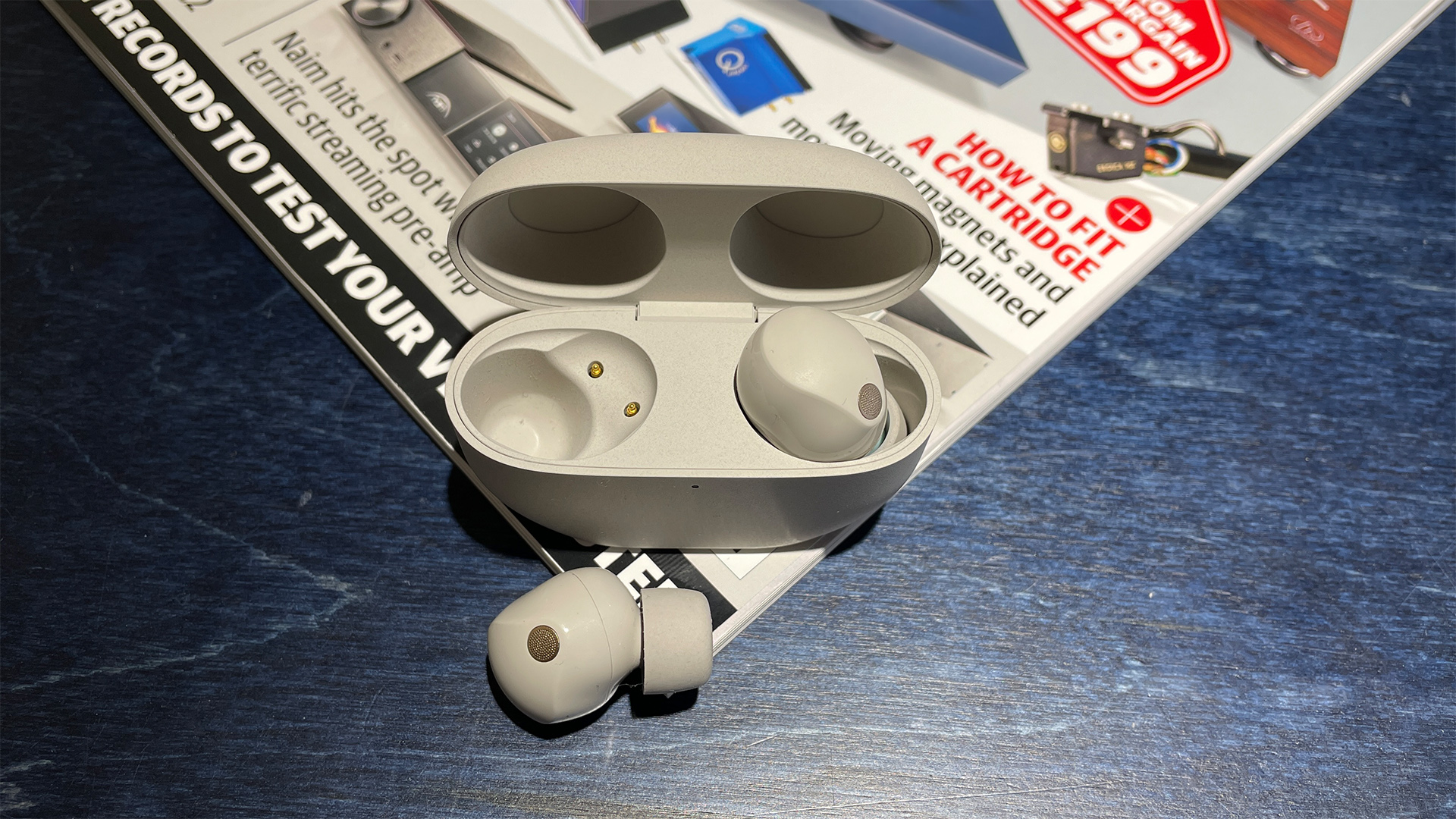
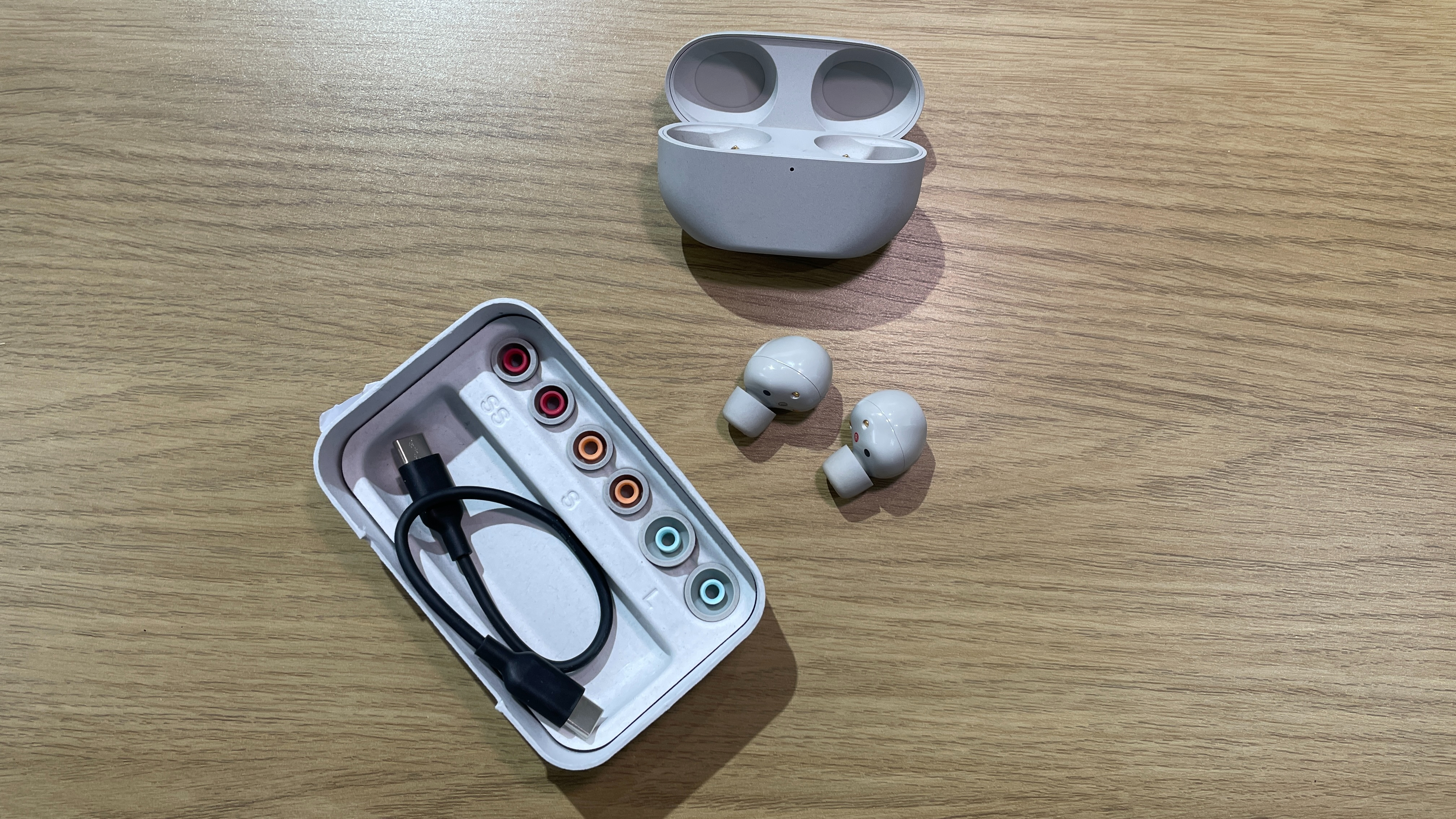
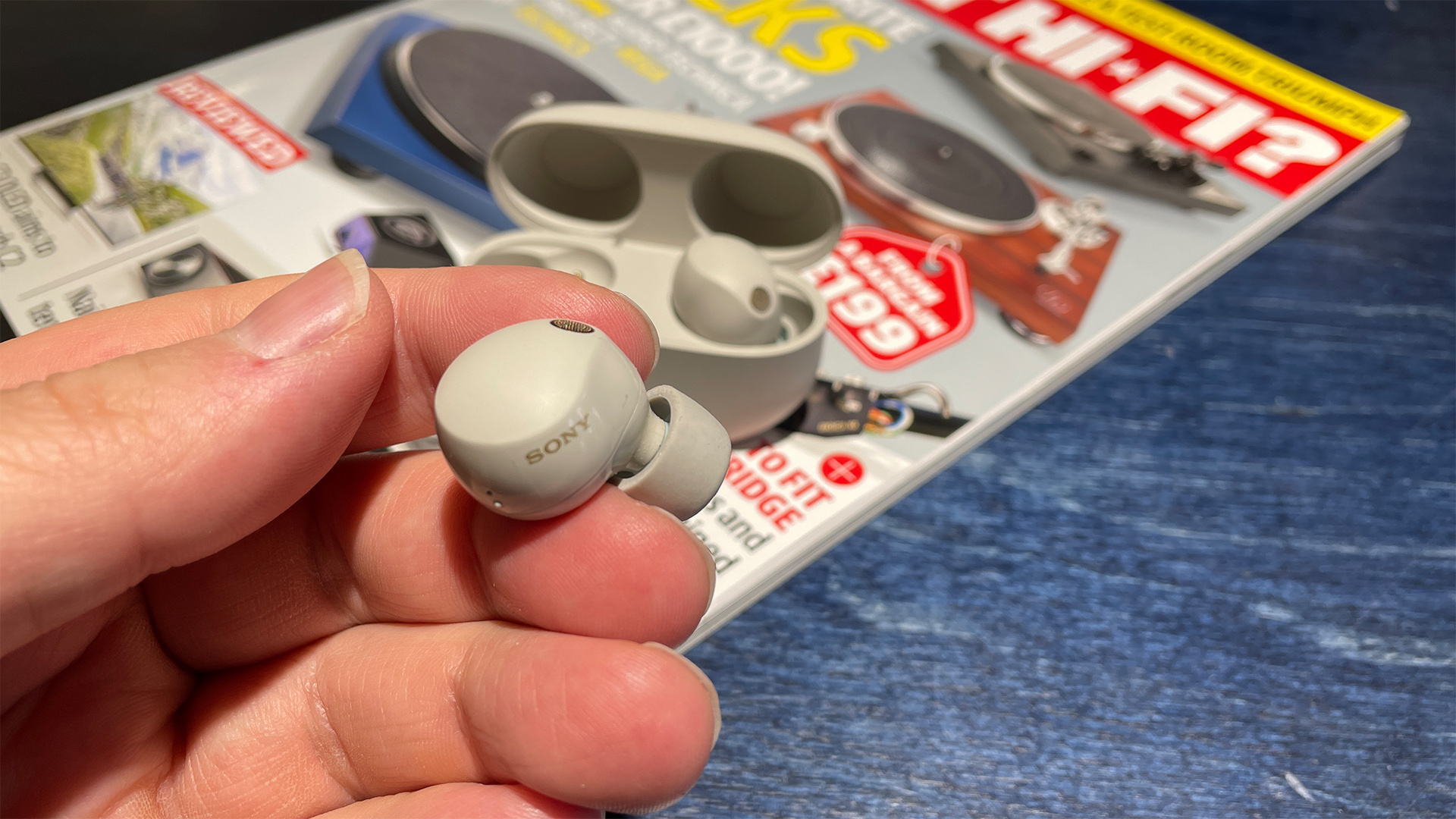
Specifications
Reasons to buy
Reasons to avoid
If you're looking for the best wireless earbuds currently on sale, look no further than the brilliant WF-1000XM5.
During testing, we found the XM5 to be comfortable and nice to use, while their noise-cancelling and call quality are up there with the competition. Looking for the clearest and most detailed sonic performance from a pair of wireless earbuds on the market right now? The WF-1000XM5 produce it.
They're not quite as rich or full in the bass as the Bose QuietComfort Ultra, but in our review we said "what Sony has managed to achieve as far as clarity and detail go is really rather special". We think they're a great choice for fans of any musical genre.
Add to that an eight-hour battery life (plus 16hrs from the case), Multipoint Bluetooth (so you can connect to two devices simultaneously), excellent noise cancellation (they seem to remove an extra layer of midrange noise compared to their predecessors, the XM4) and IPX4-rated sweat resistance, and this is a solid offering across the board.
There's no shortage of competition at this price, including the Bose QuietComfort Ultra, AirPods Pro 2 and Sennheiser Momentum True Wireless 4.
But for most people, most of the time, the Sonys are great all-rounders. Will there be a WF-1000XM6 replacing them any time soon? Most rumours point to a 2025 launch so don't expect anything to happen in the short-term.
Also, don't forget to keep an eye out for price drops on the XM5 around big sales events like Amazon Prime Day and Black Friday, when you tend to see a little bit shaved off the retail price.
Read our full Sony WF-1000XM5 review

A popular test track of mine in the early noughties, we’ve recently rediscovered Let's Get it Started while testing various wireless earbuds. What we love about this tune is it doesn’t mess around. Fergie’s opening vocal salvo tees up the song beautifully with emotion and an echo that will show the Sonys’ ability to extract detail. Then the track explodes into a funky test of timing and rhythm with a probing, agile bassline that needs to be communicated and crisp, attacking percussion that needs to have real impact and dynamism. Testing the WF-1000X5, they match the energy of the track blow for blow, starting and stopping at speed. View the album on Amazon.
Best cheap wireless earbuds
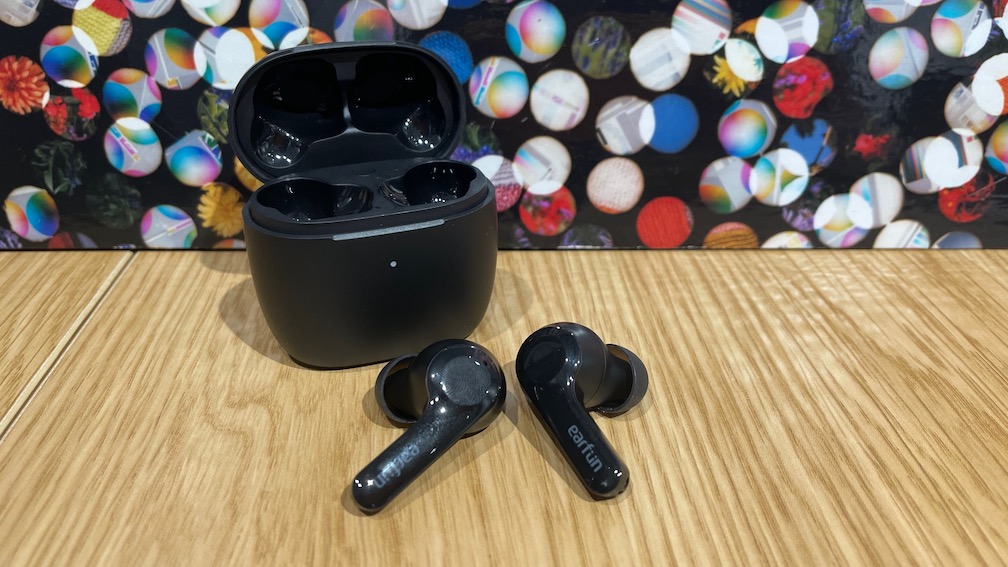
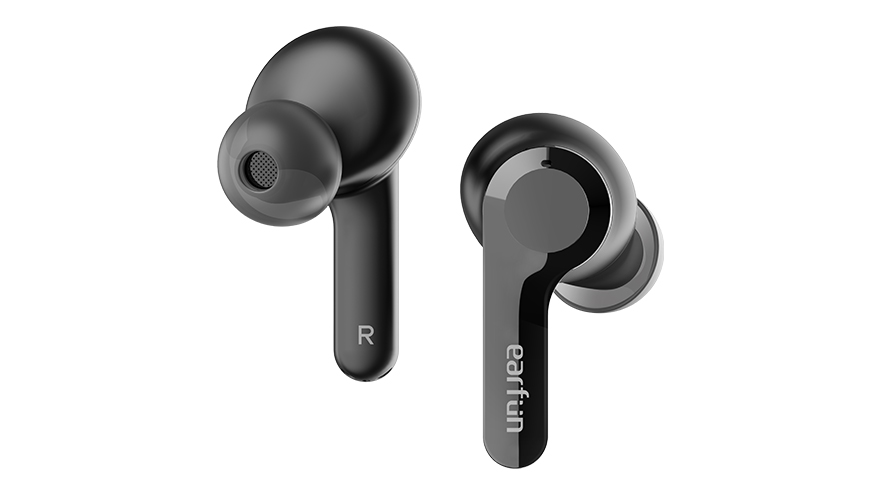
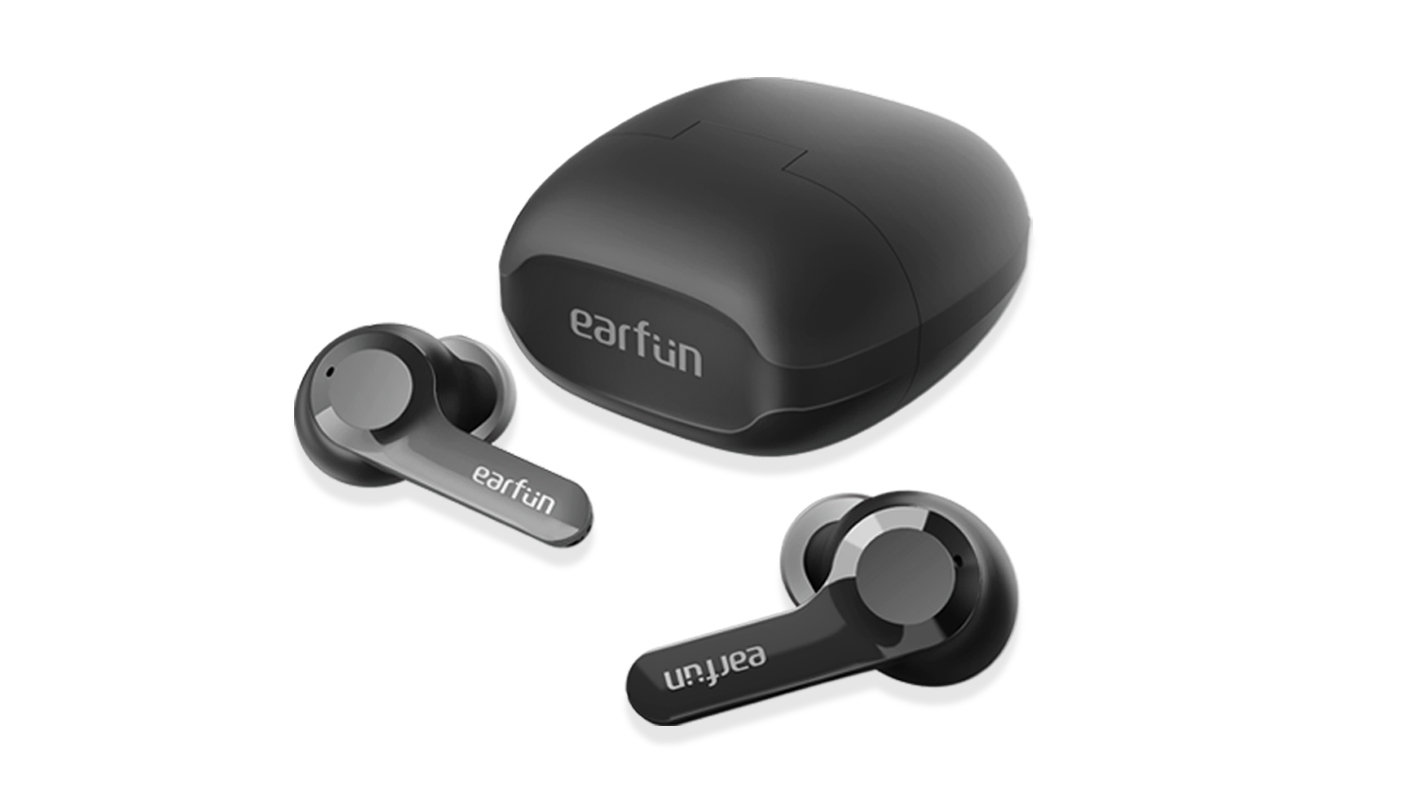
Specifications
Reasons to buy
Reasons to avoid
These true wireless earbuds aren't from what you'd consider one of the larger, heavy-hitting brands, but they are ridiculously affordable and sound great for the money too!
The Earfun Air are also packed with features. Noise-cancelling is out of the picture at this price, but there's excellent noise isolation and these well-fitting earphones are comfy to wear too. They're also waterproof to IPX7 standards (submersible in one metre of water for up to 30 mins), support virtual assistants and include Qi wireless charging.
Calls sound clear, and the battery life is seven hours from the buds and a further 28 hours from the charging case. Amazingly, we think it all feels fairly premium too. The Bluetooth 5.0 connection is solid and stable and for the money, and during testing we found the wireless earbuds offer a "grippy, energetic" sound.
If you’re after something fun-sounding that won't break the bank, the Earfun Air wireless earbuds could be just the ticket and are often found with money off. They've also been around a fair while now but we've tested the newer EarFun Air 2 and don't think they are as convincing at the money. If you want a wider selection of affordable earbuds, check out our full round-up of the best cheap wireless earbuds.
Read our full Earfun Air review
Best mid-price wireless earbuds
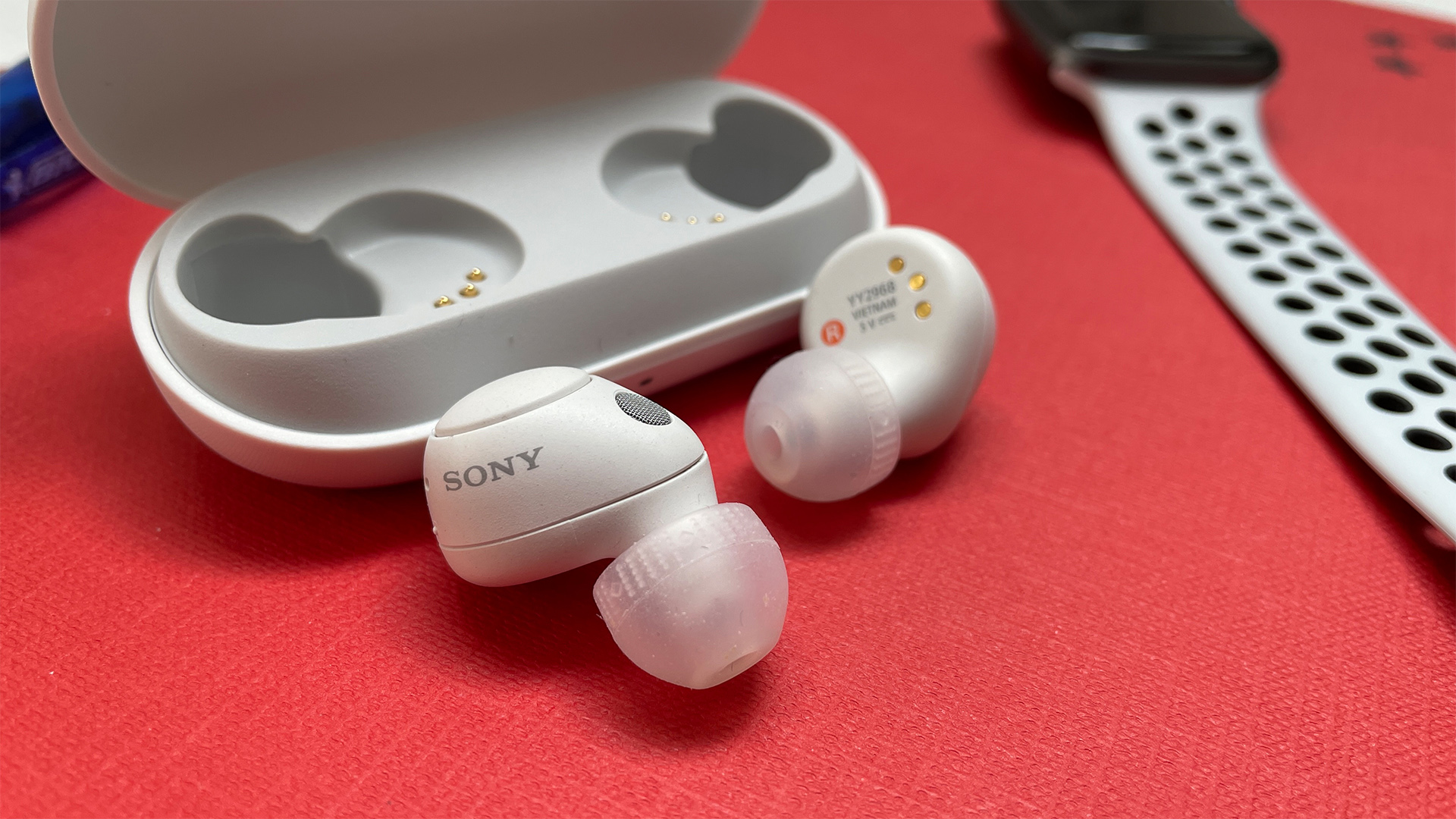
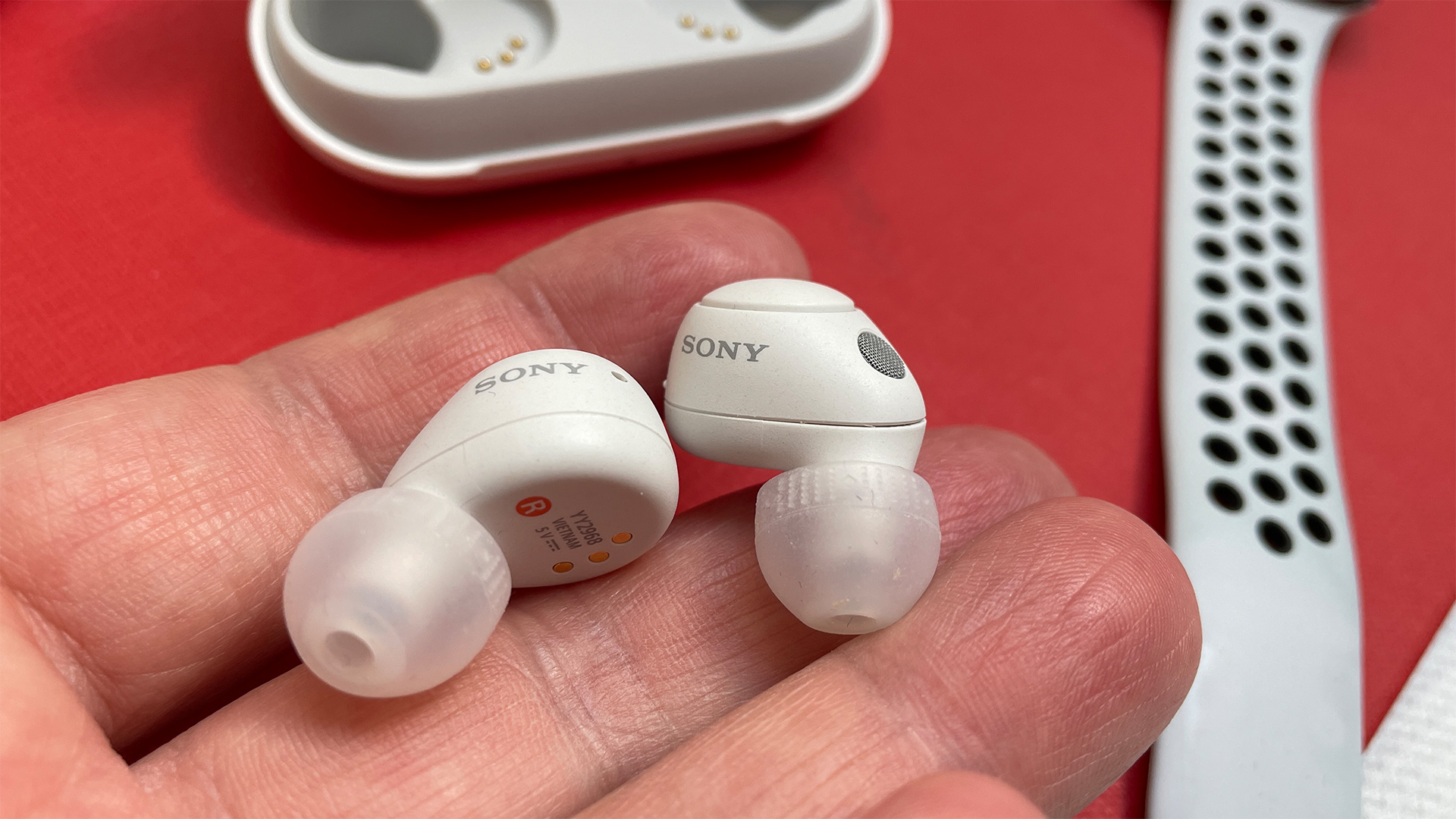
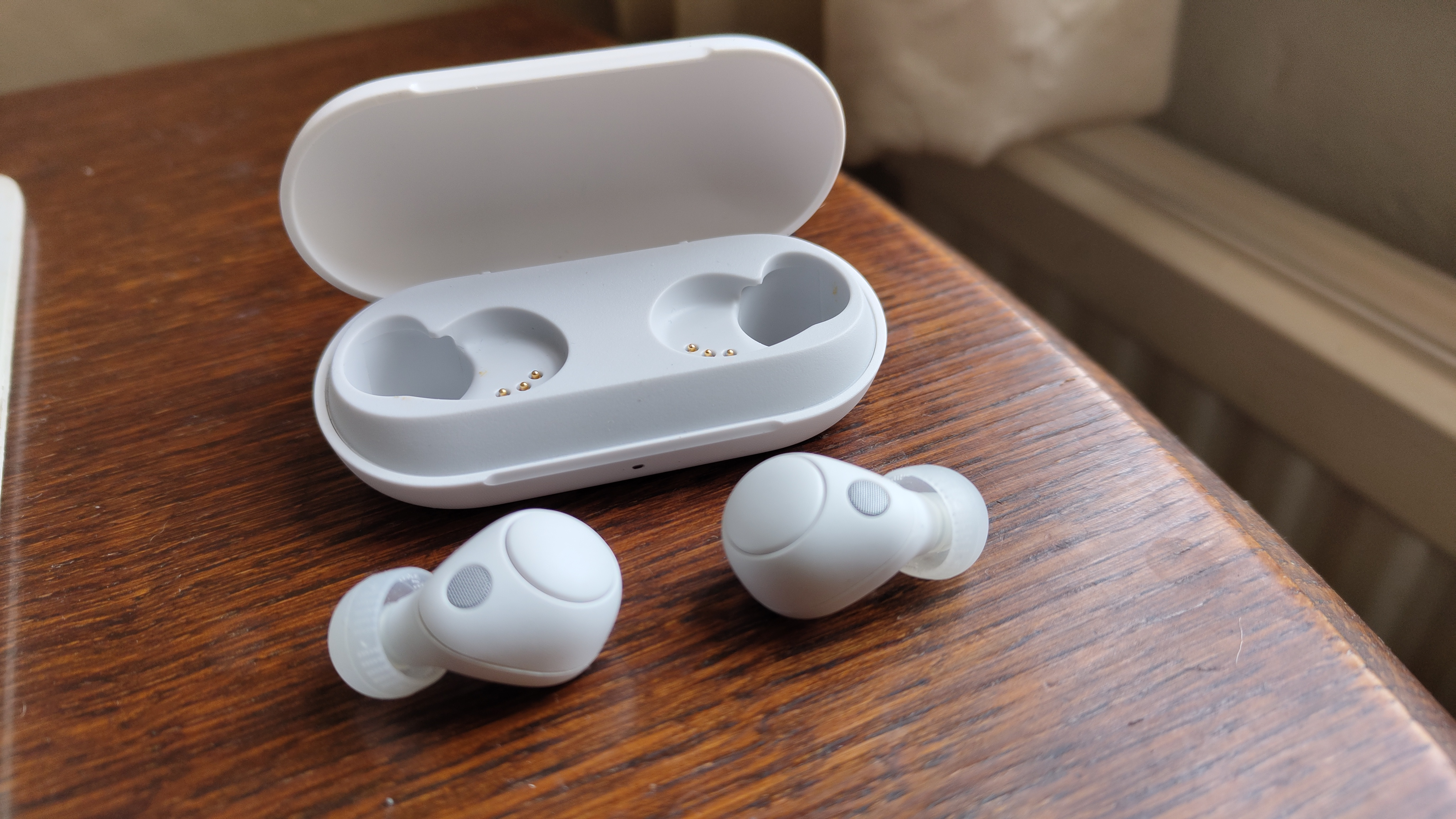
Specifications
Reasons to buy
Reasons to avoid
Sony's excellent true wireless earbuds slot neatly between the budget WF-C500 (no ANC, below) and premium WF-1000XM5 (above).
And we think they're brilliant options that more than justify their price tag. The buds are impressively small, and their lightweight design helps make them even more comfortable than Sony's XM4. Battery life is competitive at seven and a half hours.
They lack aptX HD and LDAC but do feature noise-cancelling tech, which the WF-C500 lack. Adaptive Sound Control automatically switches listening modes depending on your location, and Sony's DSEE (Digital Sound Enhancement Engine) upscales low-res digital audio files to higher quality. A software update has seen Bluetooth Multipoint also added so you can be connected to two devices simultaneously.
We think the Sonys’ sound quality is superbly balanced too, with deep, detailed bass, expressive mids and engaging highs. During testing, we said, "There’s a fantastic sense of power and drive on display that grabs your attention." They're a very musical listen for the money and a clear step up from the cheaper WF-C500.
Downsides? The lack of support for aptX HD and LDAC is disappointing, and the charging case only provides one extra charge which seems a little mean. But the superb sound and great feature set make these easy to recommend as some of the best Sony headphones available.
Interestingly, it appears there could be a successor to the C700N in the pipeline. Recent leaks point to a possible WF-C710N model launching in the first half of 2025, with supposedly improved noise cancelling and battery life. Needless to say, if confirmed by Sony, this would be huge news with the replacement model having some big shoes to fill.
Read our full Sony WF-C700N review

The fact that there are three different pairs of Sony wireless earbuds on this list shows the strength of the brand's offering in this market. Each one justifies its place on this list but I’d completely understand if you weren’t quite sure which pair to go for. I’ve been lucky enough to spend time with all three and while it’s clear that the WF-1000XM5 are the best-sounding and most technically advanced, especially where noise-cancelling and call quality are concerned, I do think the WF-C700N are the sweet spot of Sony’s range, offering a superb balance of performance and value for money.
Best premium wireless earbuds
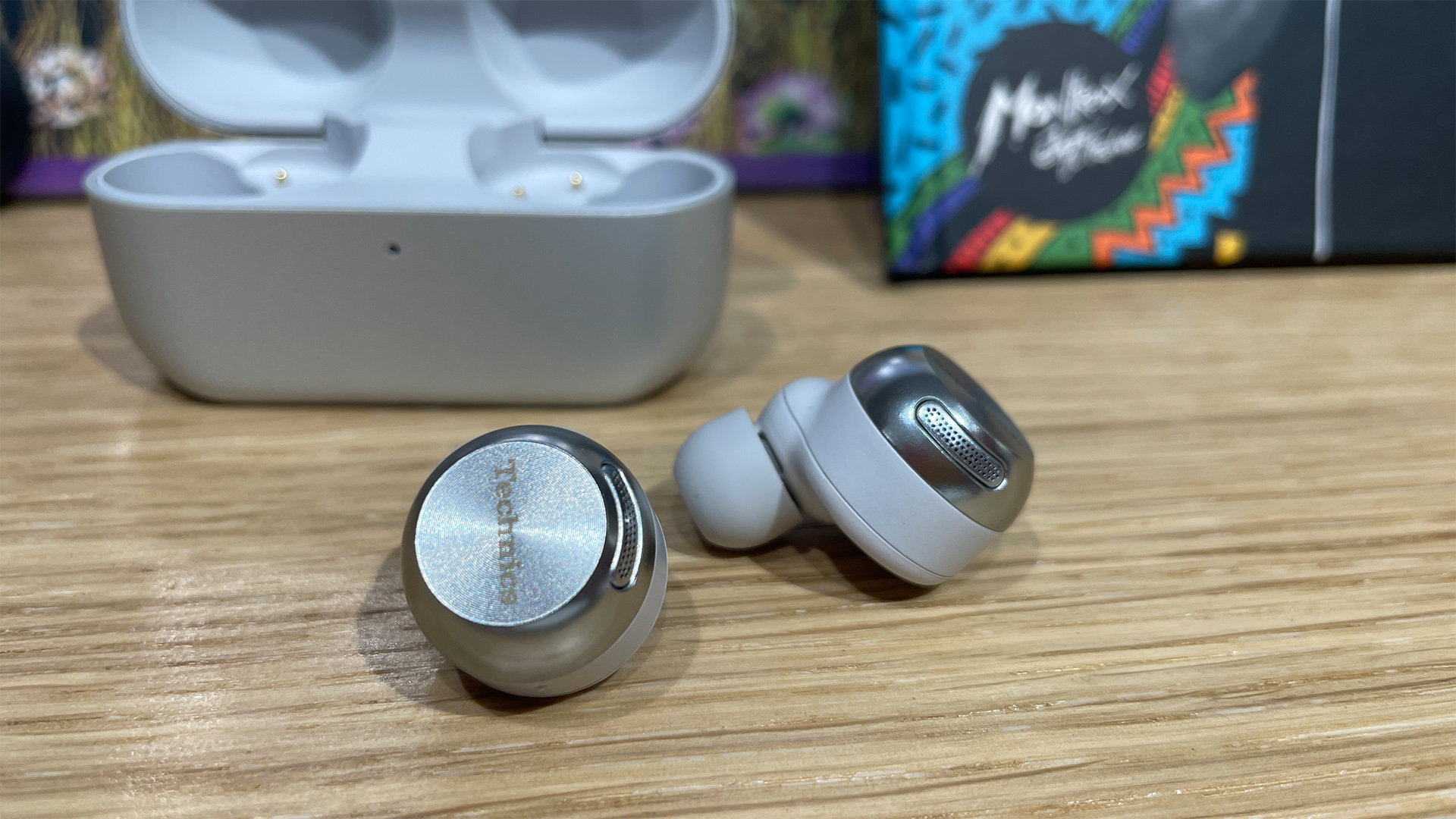
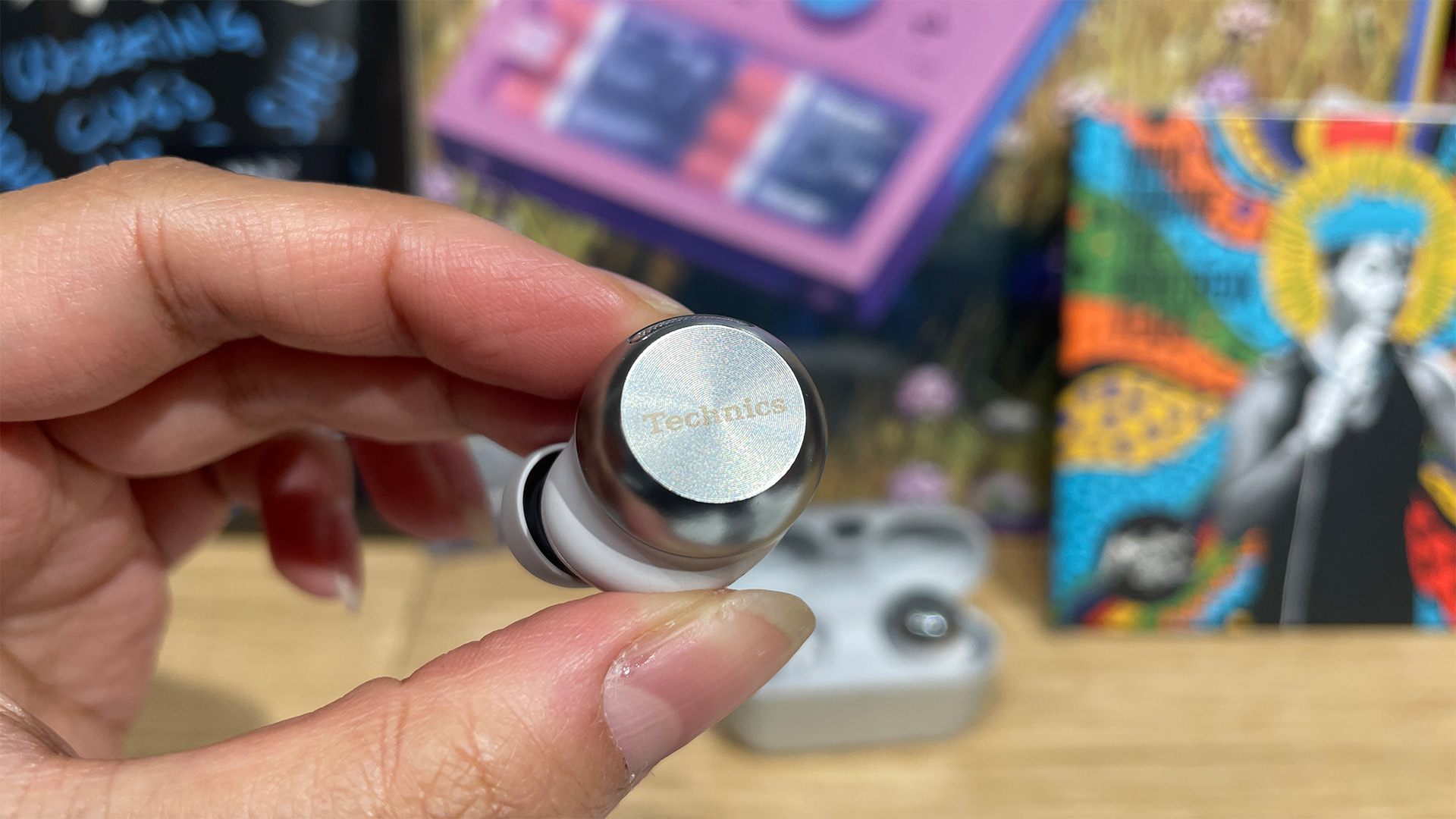
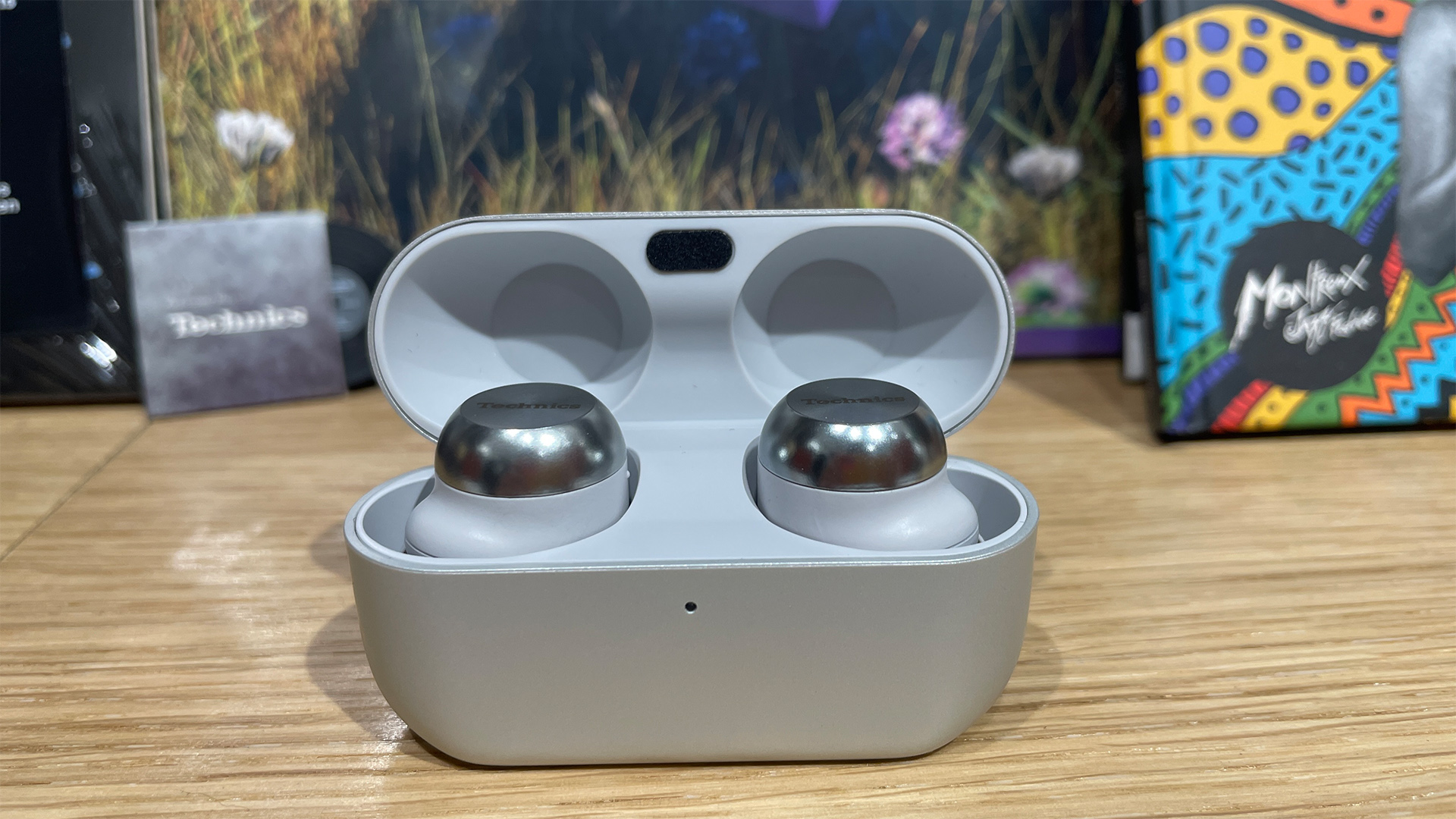

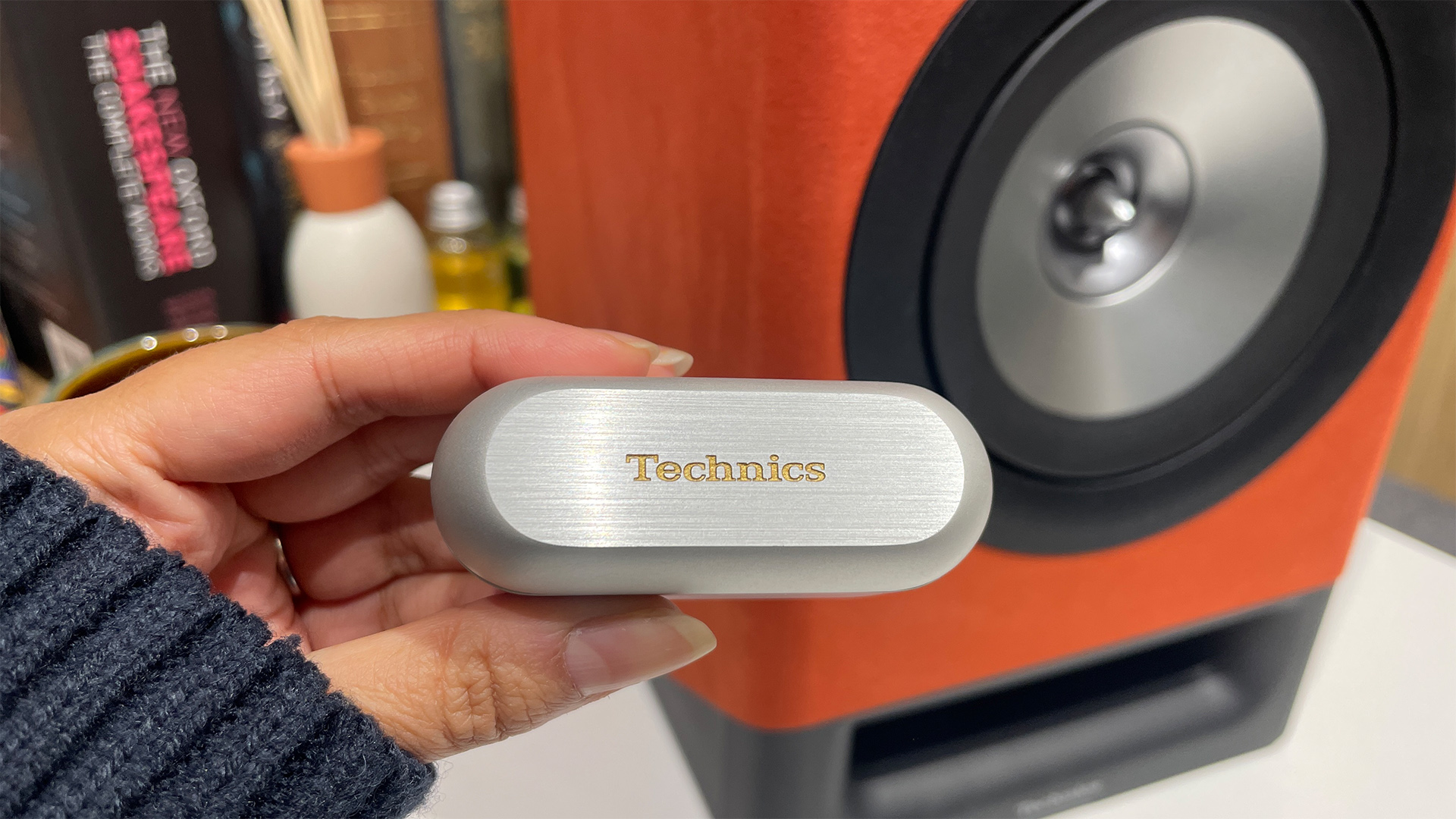
Specifications
Reasons to buy
Reasons to avoid
Technics might be better known for direct drive turntables and hi-fi electronics, but its new flagship wireless earbuds have left quite the mark on our review team. As a result, the EAH-AZ100 slot neatly into this list between the Sony WF-1000XM5 and the Bowers & Wilkins Pi8 as our pick of the best premium wireless earbuds.
They are small, light and we found them to be comfortable to wear for long periods of time. The touch controls on each bud are fully customisable, so you can set the Technics up to control audio modes, playback and volume in any way you want.
We found the Bluetooth connection to be solid and stable, while the buds support SBC, AAC, LDAC and the LC3 codec (which supports LE (Low Energy) Audio). Battery life should be good for around ten hours from a single charge which is very competitive.
The noise cancelling is excellent and in our review we said, “it damps down noise around you like heavy snowfall muffling the world” and can be adjusted manually or the buds will do it automatically, taking into account the amount of ambient noise present. It’s not quite as good as the Bose QuietComfort Ultra’s ANC, but it’s still very good.
Sonically speaking, we loved their even-handed tonal balance and their “wonderfully clear and open sound”. We stated that “it’s an impressively spacious and open presentation, even more so than the Sony XM5”. Across the frequency range, the Technics sound precise and impactful and never overbearing. Their punchy dynamism elevates them over older Technics pairs and makes them a great alternative to rival pairs around this level.
Read our full Technics EAH-AZ100 review

The Battle is such an epic track that it can regularly be heard blasting from our test rooms when putting speakers through their paces. It starts quite gently but it isn't long before the drama begins to build with dramatic pauses and bold drum beats. And then the track explodes into action with the strings and woodwind sections of the orchestra rising up a swell of frenzied action before falling away and then rising up again for rounds two and three. A fantastic test of dynamism for hi-fi kit and wireless earbuds alike. View the album on Amazon
Best wireless earbuds for battery life
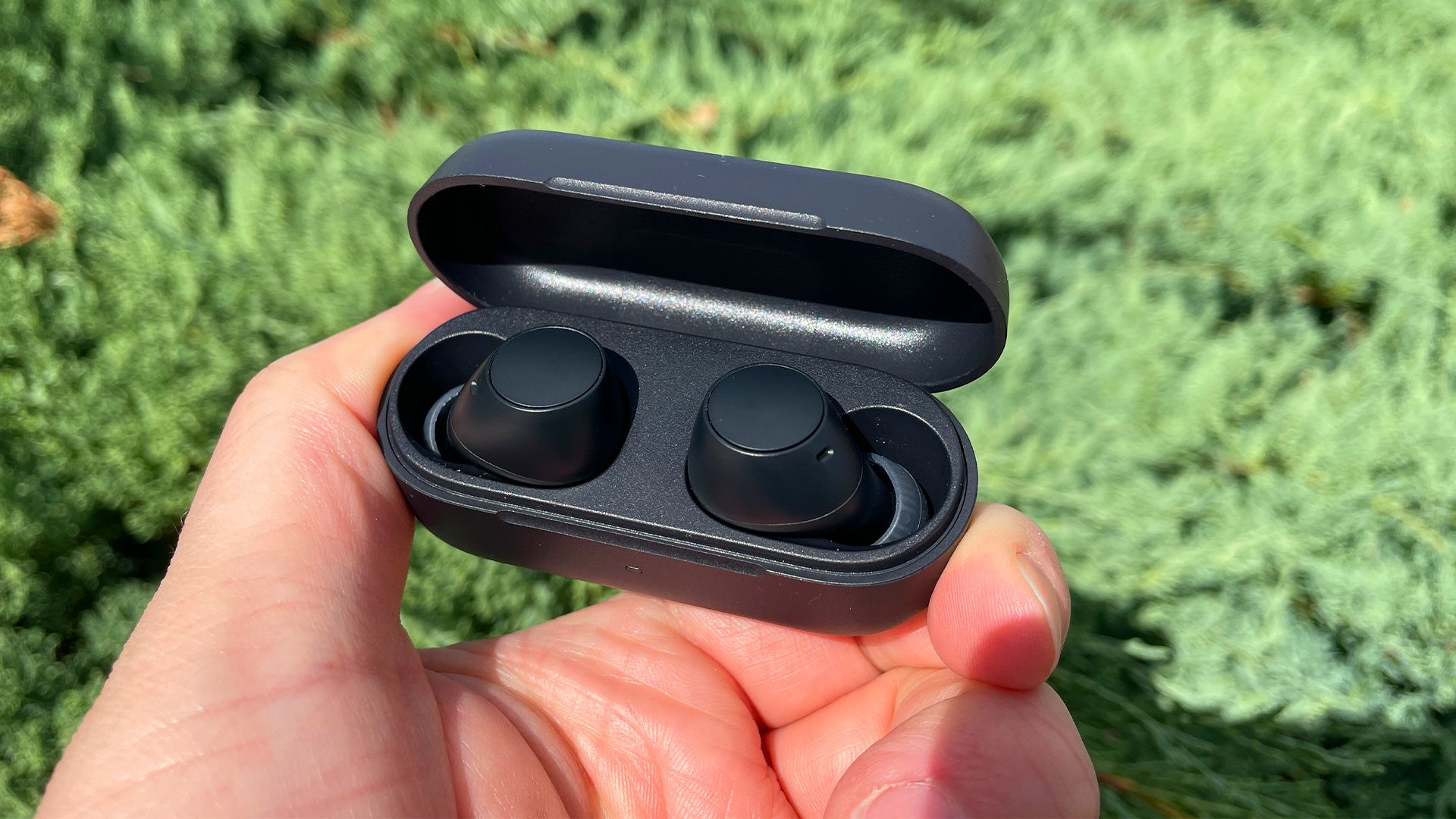
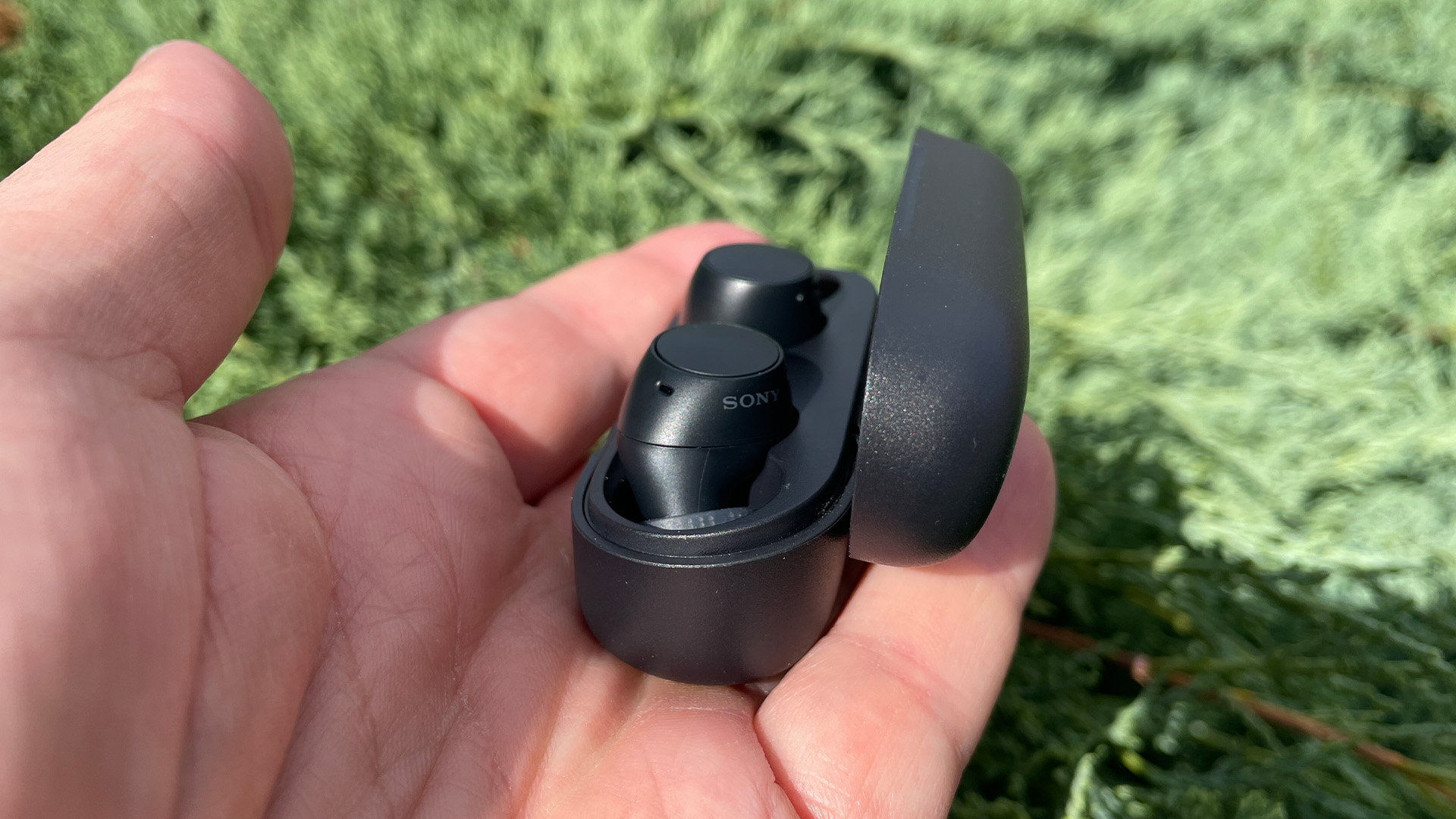
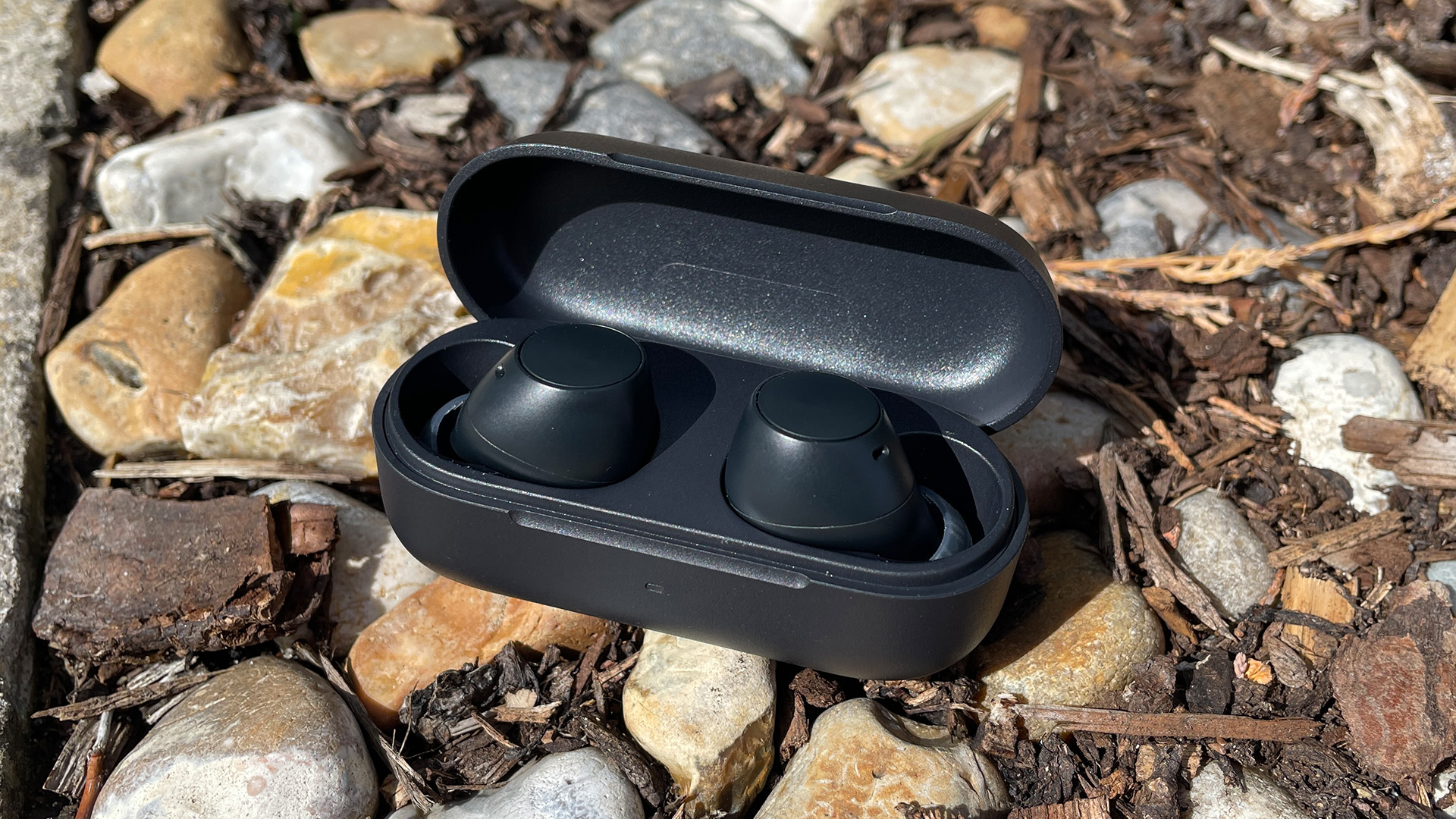
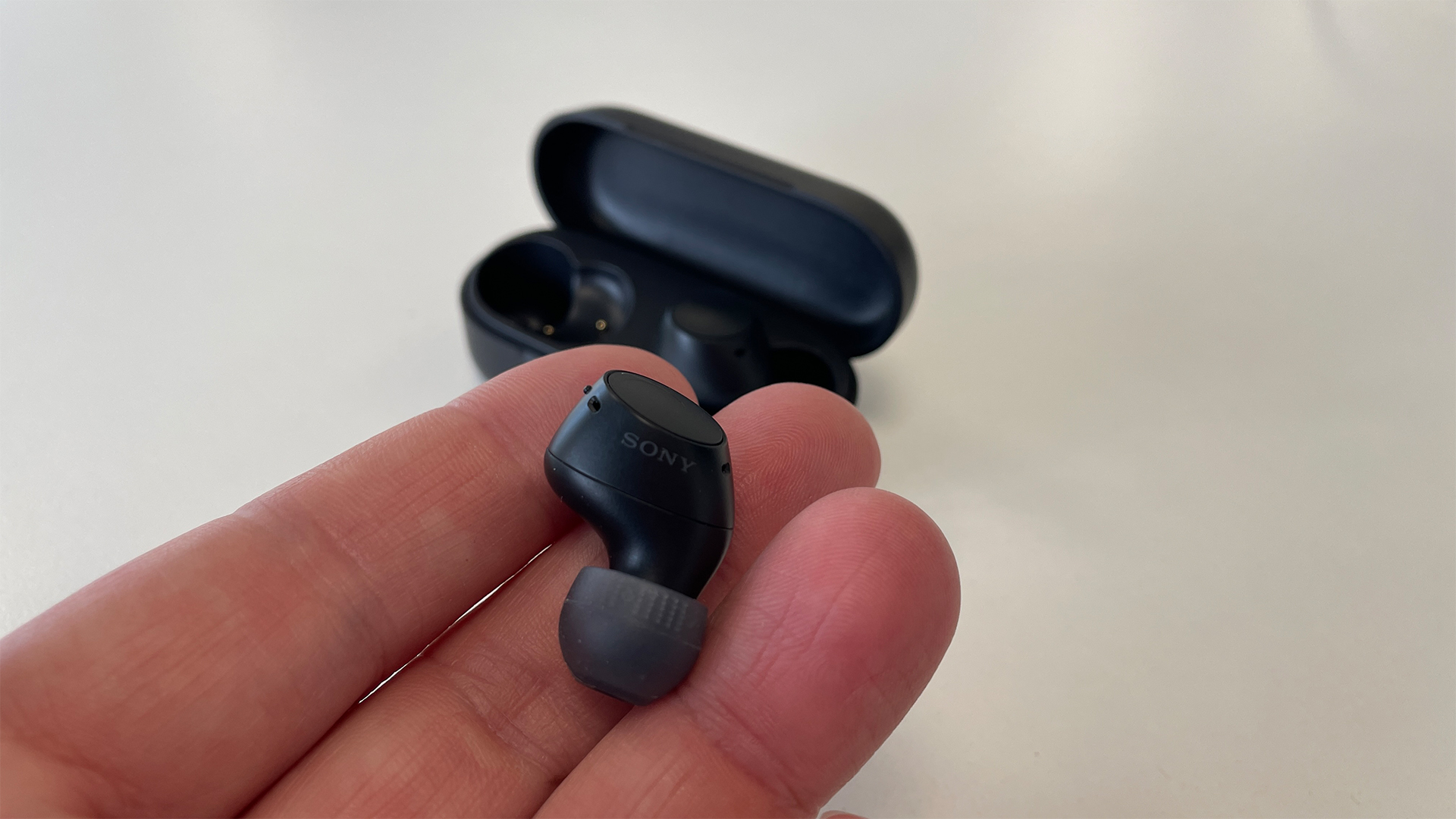
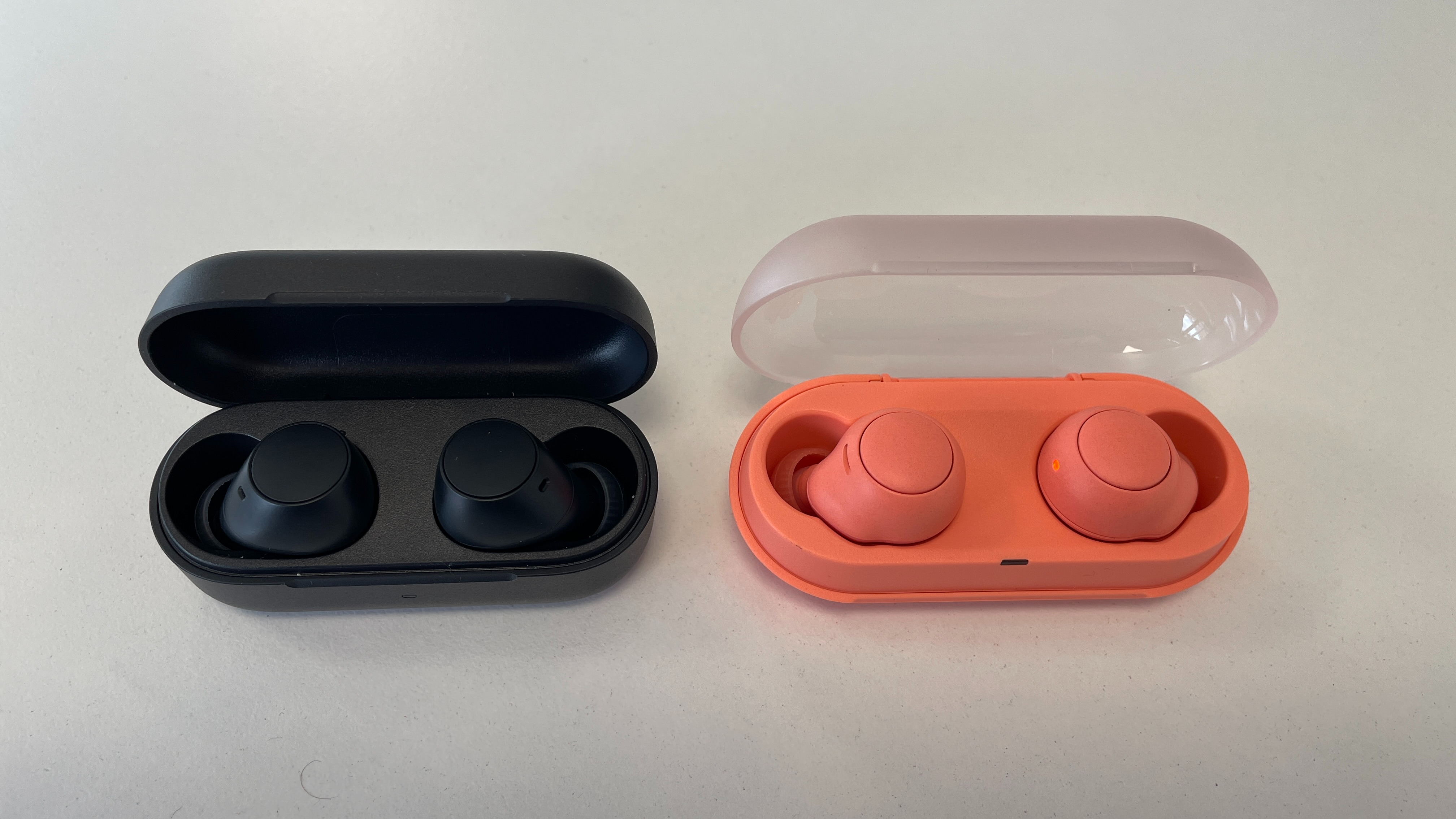
Specifications
Reasons to buy
Reasons to avoid
When Sony announced it was launching a successor to the WF-C500, which have been in this list for a while now, we weren’t sure if Sony could deliver another budget pair that delivered the goods. But the Japanese giant has delivered another masterclass in cheap wireless earbuds.
They also last for a mighty impressive 11 hours per charge (with Ambient Sound Mode and DSEE switched off) which is one hour more than the previous model.
Admittedly, the WF-C510 look and feel cheaper than their predecessors, but the sound quality on offer is anything but. In fact, we’d go so far as to say the WF-C510 are a clear step up from the older model. They deliver all the musicality and detail that we loved from the WF-C500 but add a newfound sense of richness and body that helps reinforce their abilities throughout the frequency range.
The level of entertainment you get from them belies their budget price tag. For the money we were blown away by “the way they dig out emotion and detail” and praised the way they “serve up a solid, weighty and driven sound”. We think the only way you’ll better the sound quality is to jump up a level to the WF-C700N which you’ll also find on this page.
But if you want an affordable and wonderfully musical pair of wireless earbuds then you don’t really have to look past the WF-C510. They also have more useful features than the outgoing pair too, such as Multipoint Bluetooth and Ambient Sound Control. You can control playback and volume using the built-in buttons on each bud so the user experience is as simple and intuitive as you could wish for too.
It's worth noting that following the launch of the WF-C510 you can now pick up the older WF-C500 with some impressive savings if you shop around online. While they don't sound as good as the newer model, they still boast ten-hour battery life and build quality is arguably better. Just something to consider.
Read our full Sony WF-C510 review
Best noise-cancelling wireless earbuds
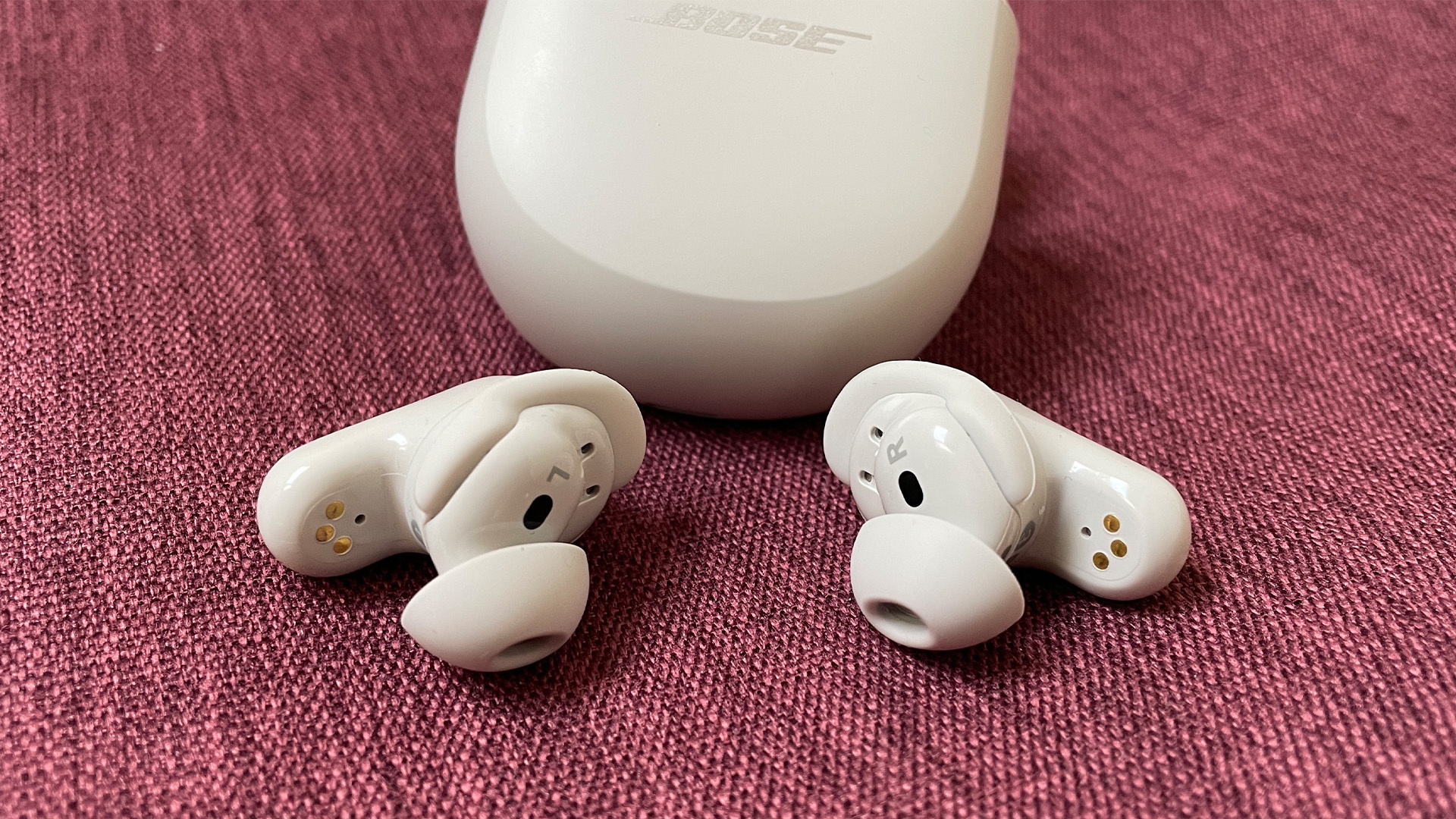
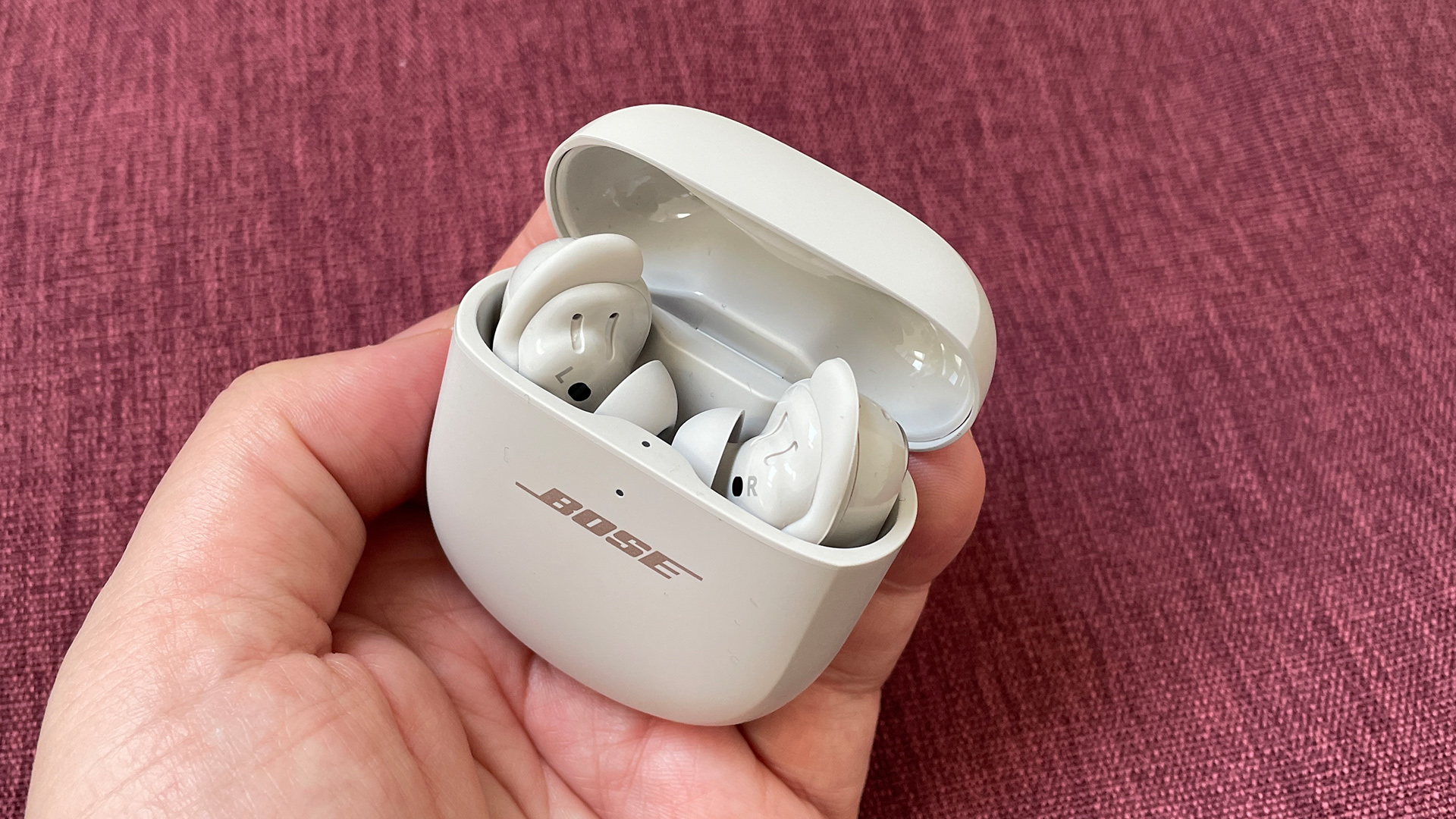
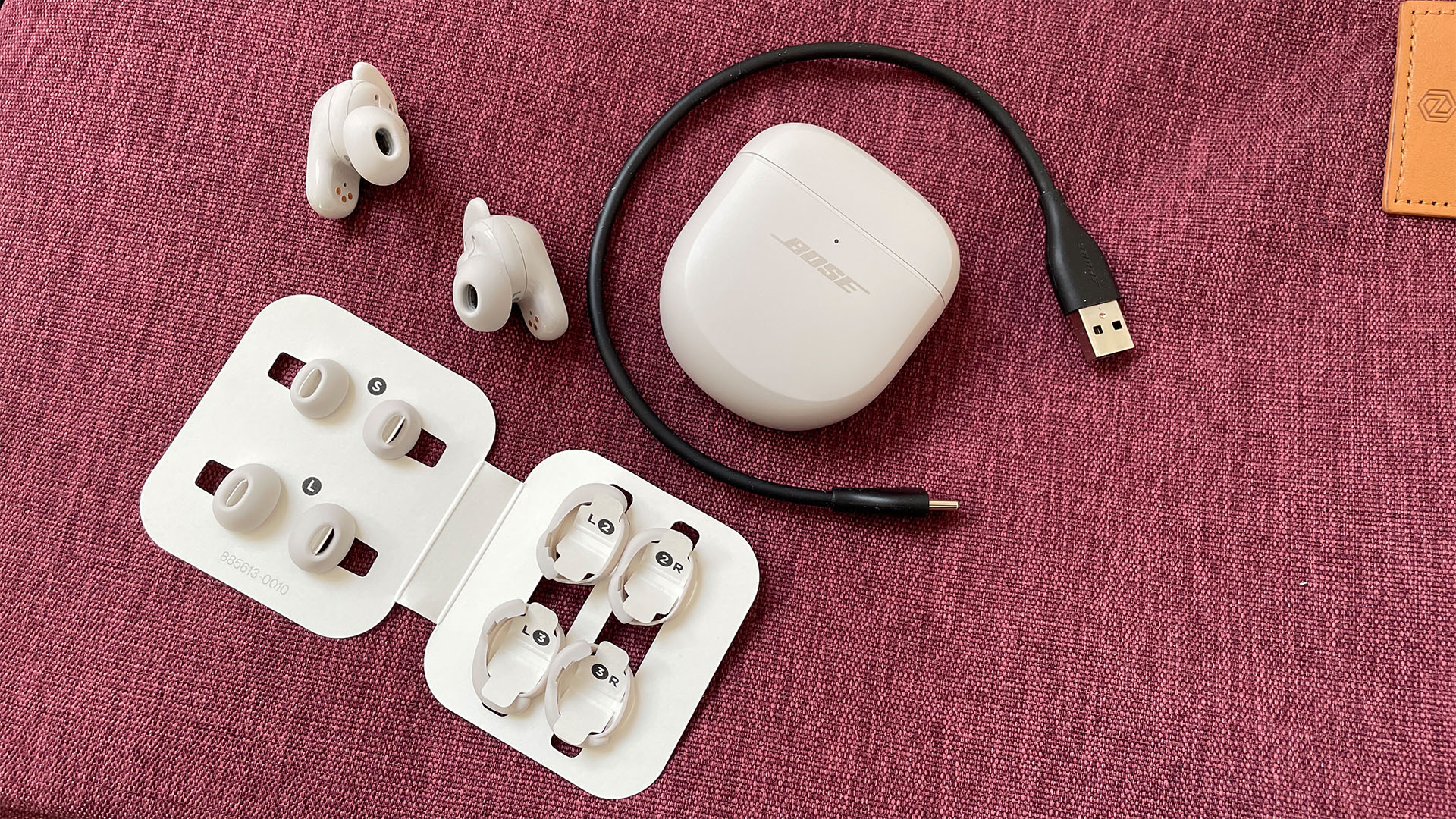
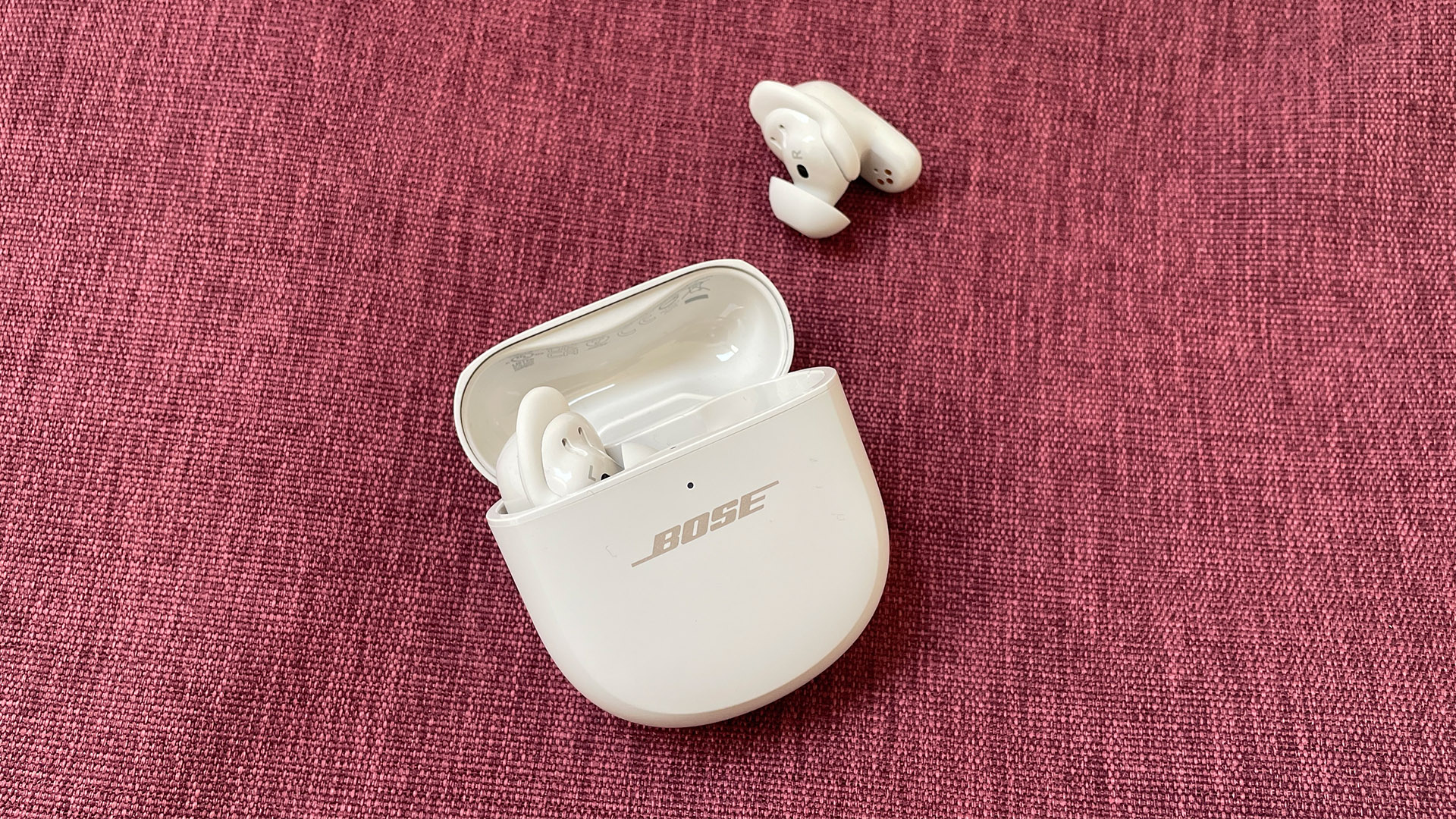
Specifications
Reasons to buy
Reasons to avoid
We all know Bose knows how to make a great pair of wireless headphones and the QuietComfort Ultra Earbuds have to be considered its finest true wireless earbuds to date.
The Ultra provide a comfortable fit and lots of features. Bluetooth 5.3 is a big bonus, while they are also Bose's first in-ears to offer its very own spatial audio tech, Immersive Audio.
The Bose app allows you to alter the amount of noise-cancelling on offer via several customisable presets and, speaking of noise-cancelling, the new Bose are still at the top of their game. They can automatically adjust the amount of ANC on offer so your music isn’t drowned out by particularly loud noises and the effect is deeply impressive. As for sound, it's balanced, punchy and wonderfully musical – in our review, we said "there is a good sense of openness and spaciousness to the whole presentation". Call quality is good for the money too.
It's a shame there's no support for high-quality wireless audio codecs such as LDAC or aptX HD, nor is there wireless charging (which is present on the Sony WF-1000XM5). But we don't think this is the end of the world when you consider that these classy buds ooze such sophistication. This month's big news is that Bose has finally added multipoint Bluetooth with its latest update, which means you can now have two sources connected simultaneously.
The Ultra actually replace the company's previous What Hi-Fi? Award winner – the Bose QuietComfort Earbuds II, so shop around and you might be able to find a big chunk of cash slashed off the older pair. It's an option worth considering.
Read our full Bose QuietComfort Ultra Earbuds review
Best audiophile wireless earbuds
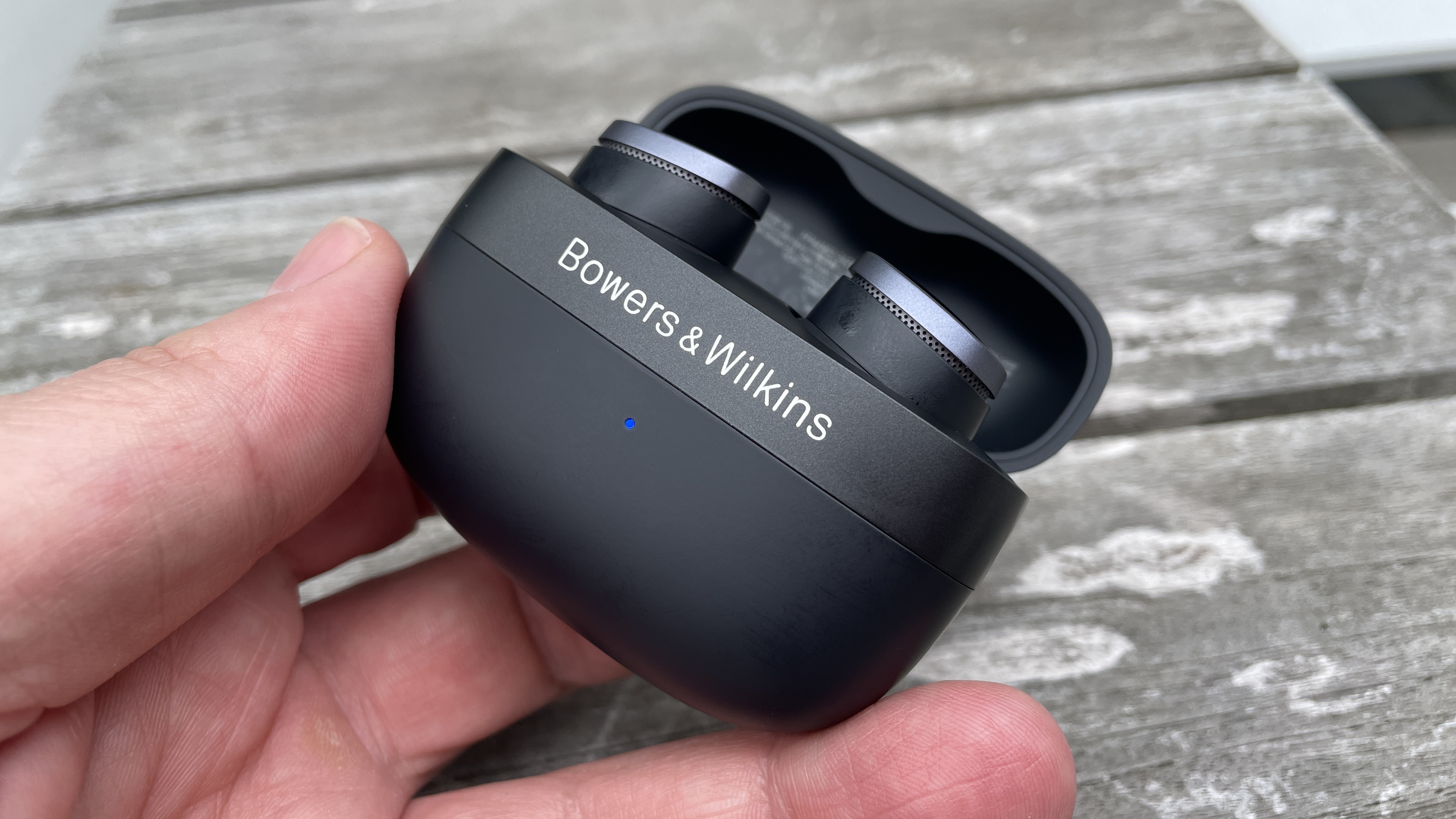
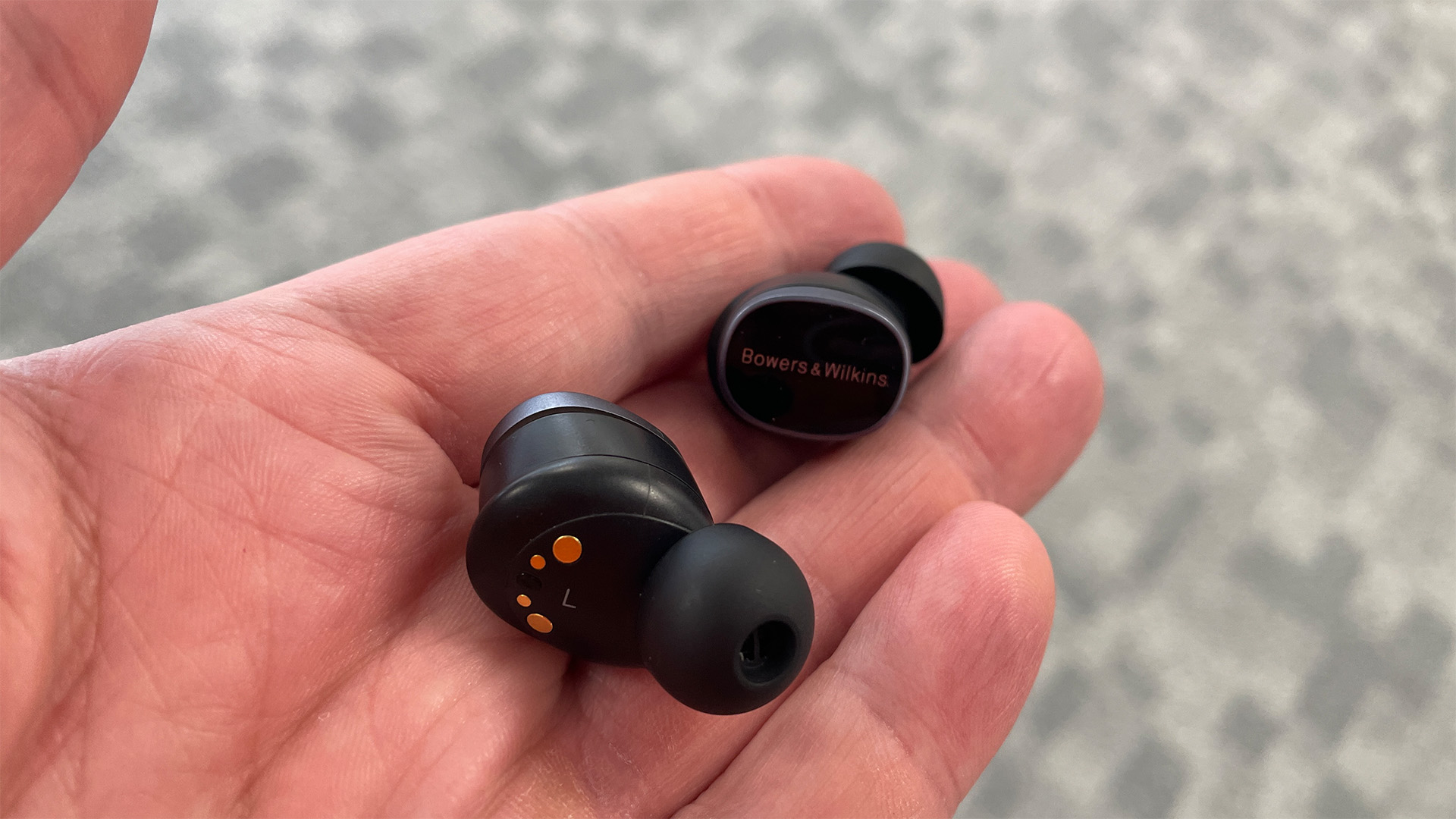
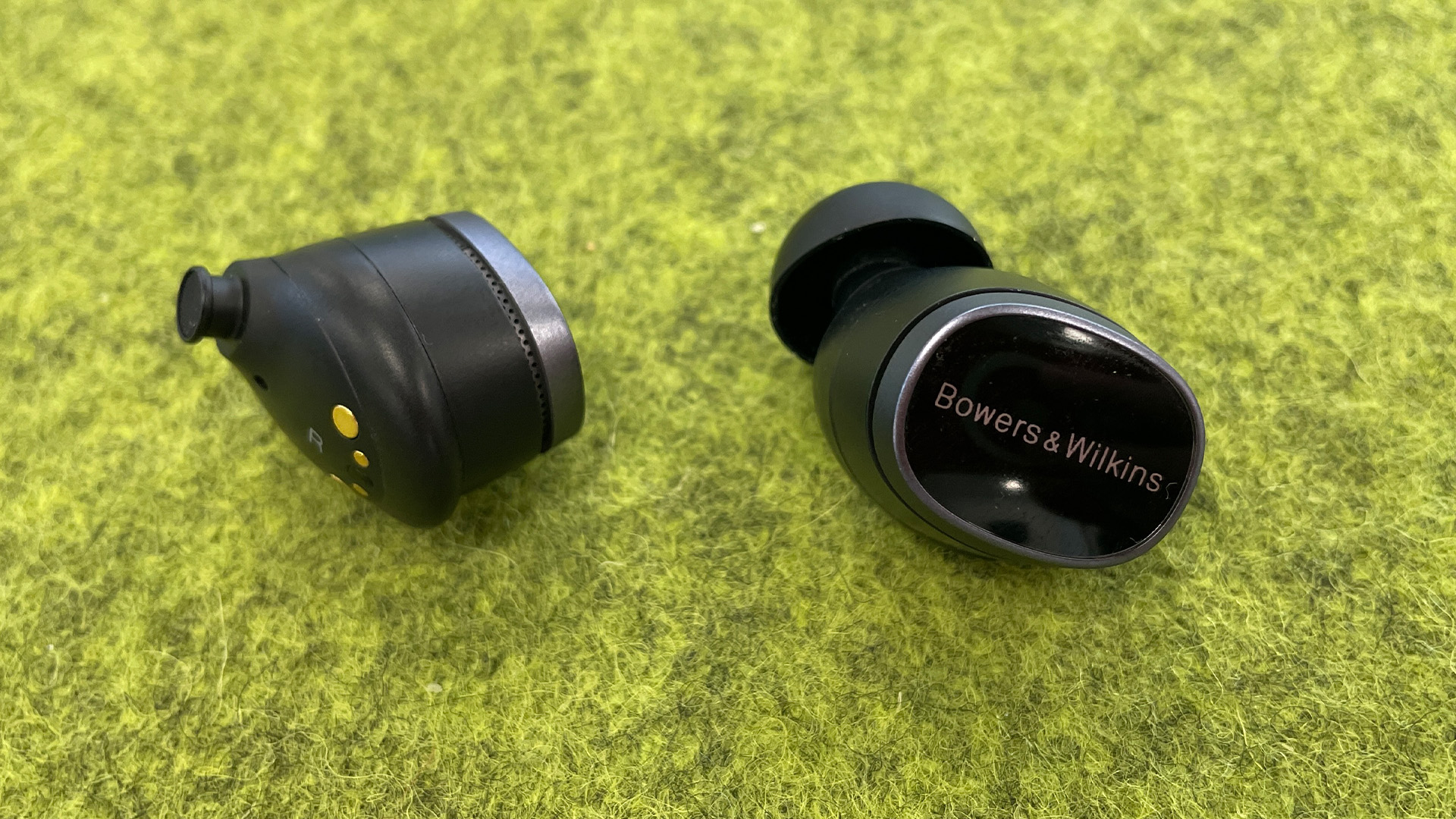
Specifications
Reasons to buy
Reasons to avoid
Bowers & Wilkins isn’t new to the world of wireless earbuds but its past efforts haven’t quite hit the spot. However, all that has changed with the arrival of its latest flagship pair.
If you want lashings of detail and insight from your wireless earbuds, the Pi8 have to be heard to be believed. During testing, our review team found that their ability to drag subtlety and nuance out of recordings was hugely impressive. You won’t find a more detailed-sounding pair of earbuds on this list. They are also dynamic and rhythmic too, capable of keeping you entertained no matter what musical genre you feed them. The earbuds use a carbon cone driver which is the same material used in its five-star PX8 wireless headphones and it works wonders in the Pi8.
As you’d expect from premium wireless earbuds, build quality and comfort are excellent. The plastics feel of high quality whether you’re talking about the wireless charging case of the earbuds themselves. The case actually doubles as a wireless audio re-transmitter which means you can use it on, say, a plane where you want to beam the audio from your infotainment system to the earbuds but the plane’s system doesn’t support Bluetooth.
Their active noise cancelling is great at blocking out low-frequency rumbles and commotion, even if it isn’t quite as accomplished as that offered by the Bose QC Ultra Earbuds which you’ll find on this list. We think the Bose cancel out a greater selection of high frequencies. Battery life is a solid, but not spectacular, six and a half hours per charge, while call quality is good enough at this level to compete with key rivals.
Read our full Bowers & Wilkins Pi8 review
Best AirPods
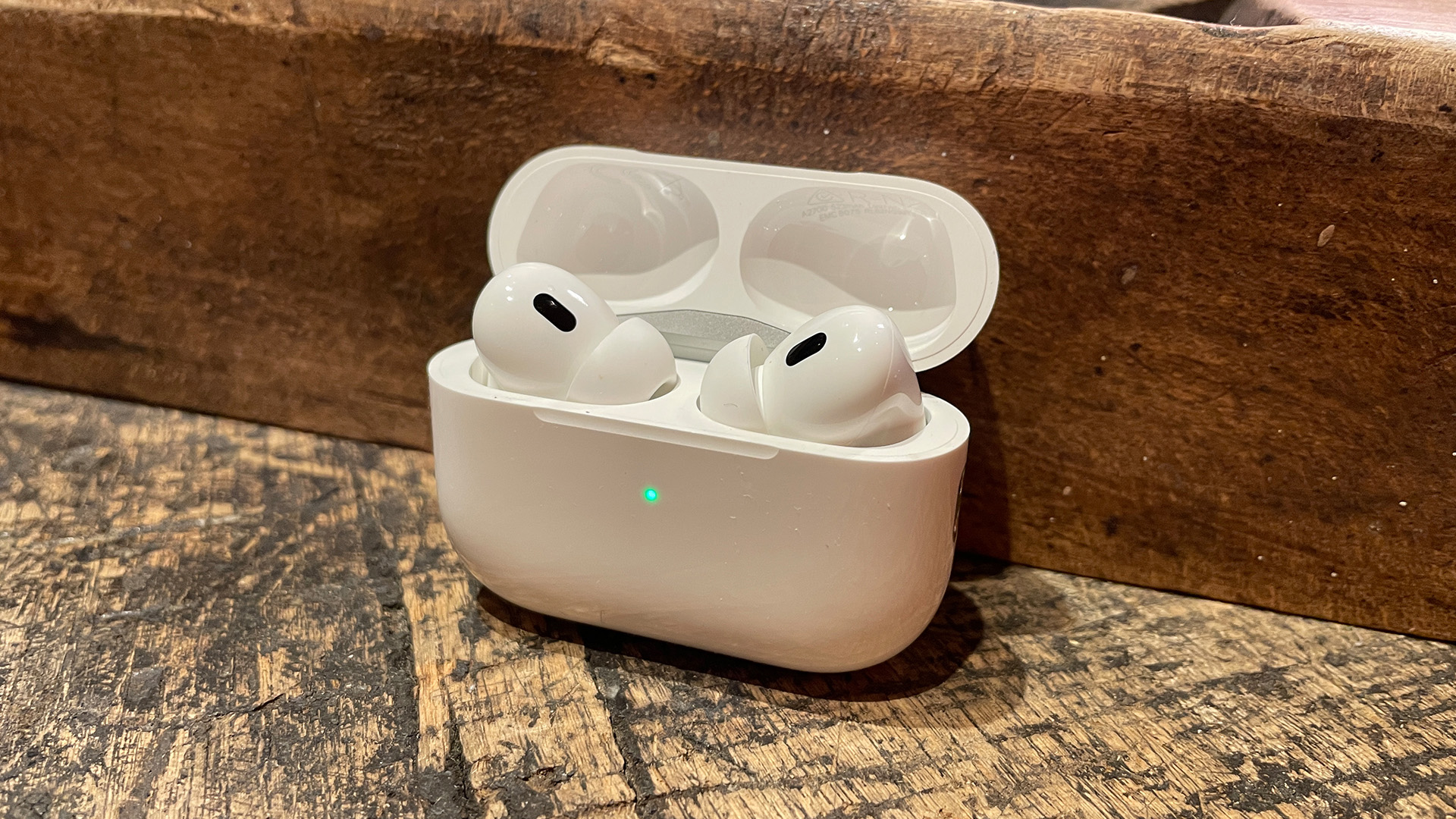
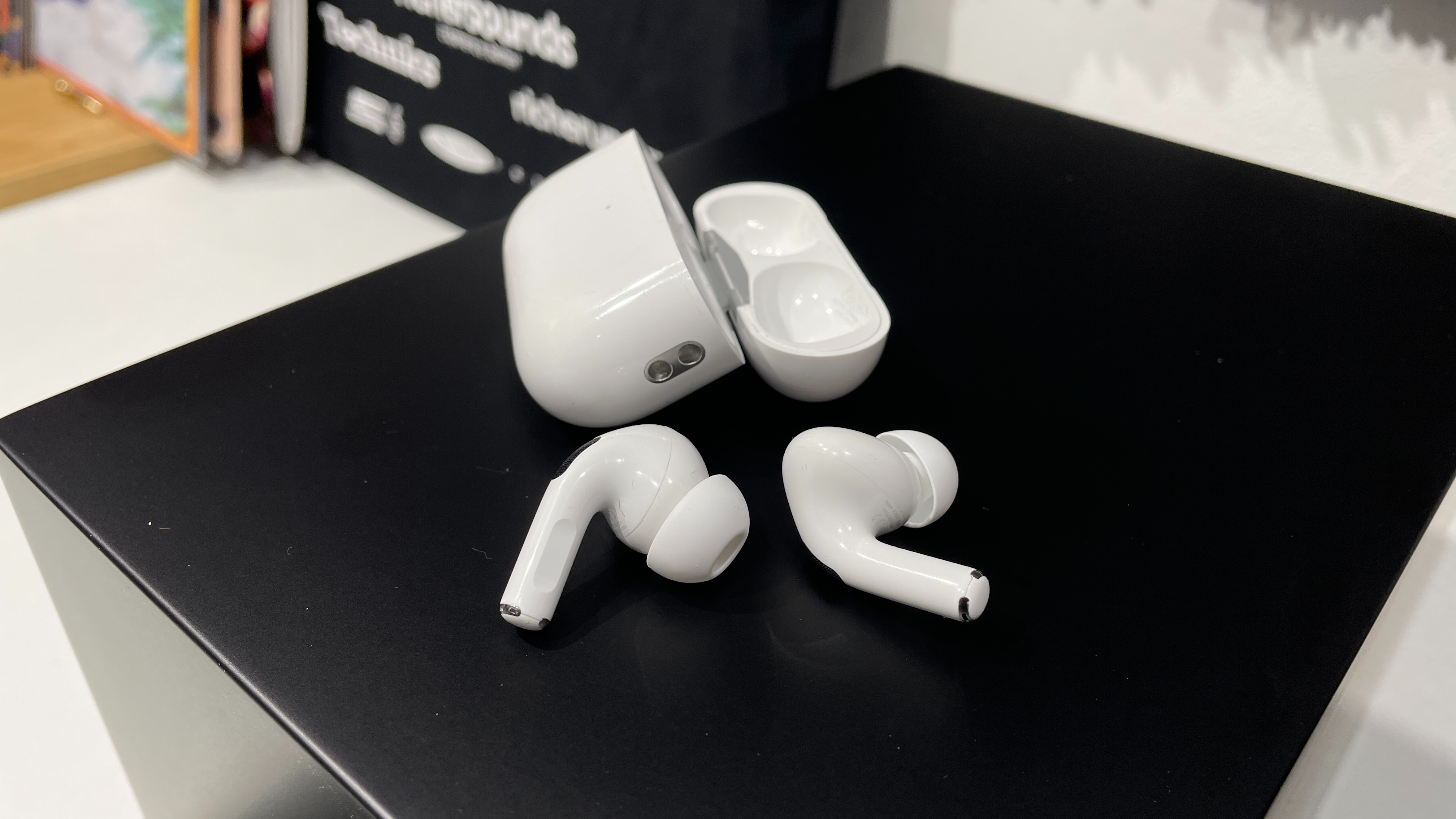
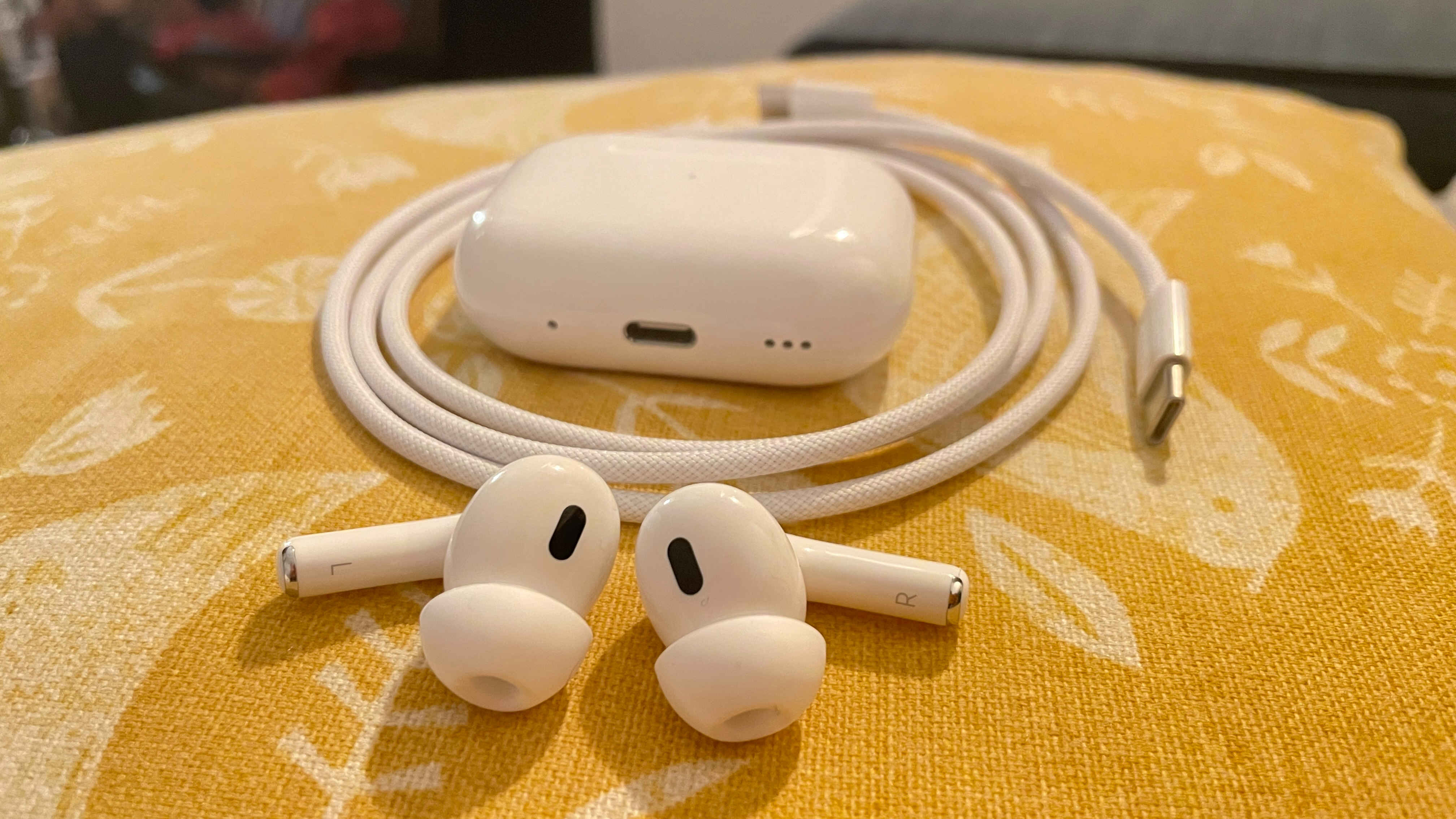
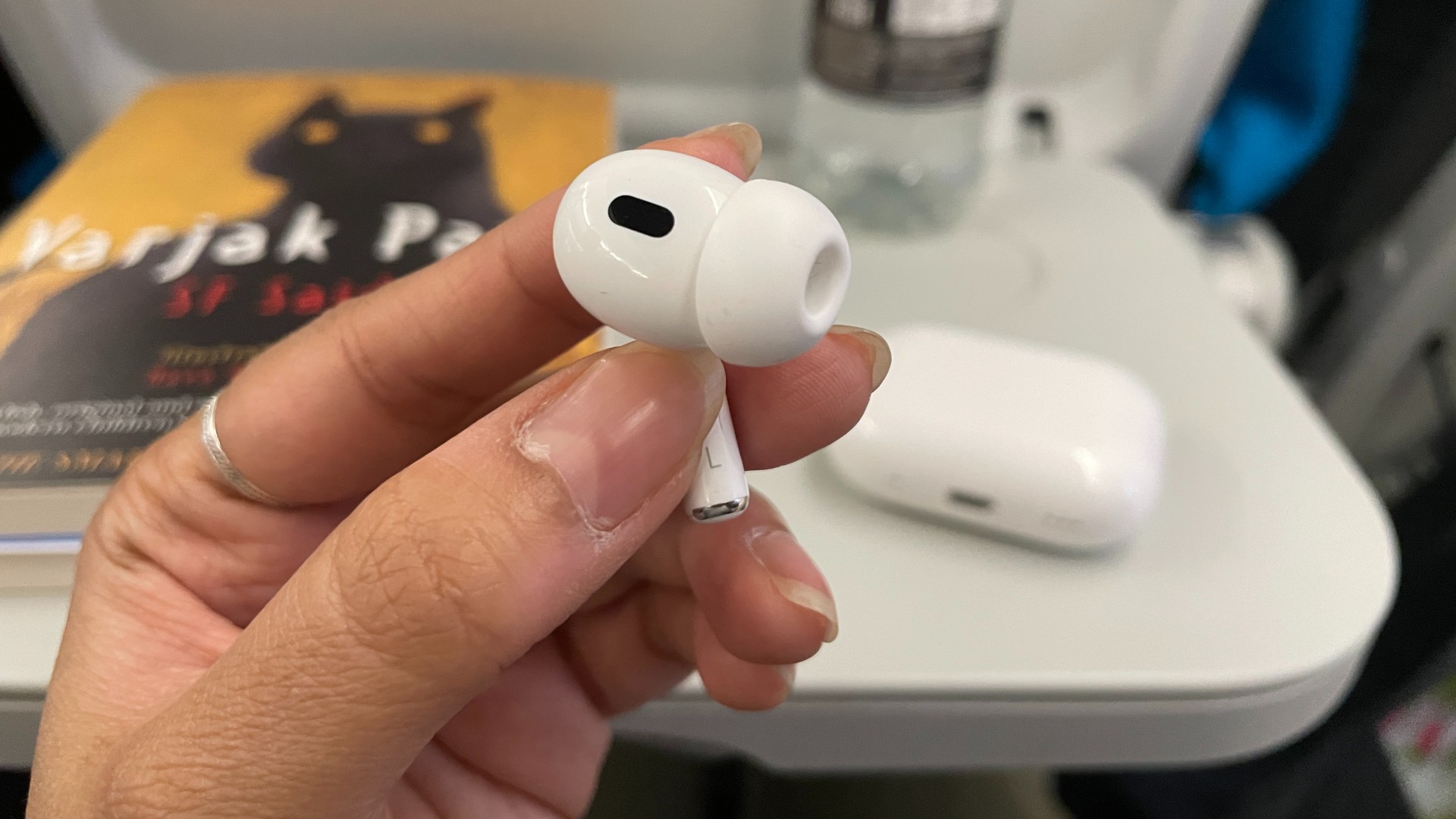
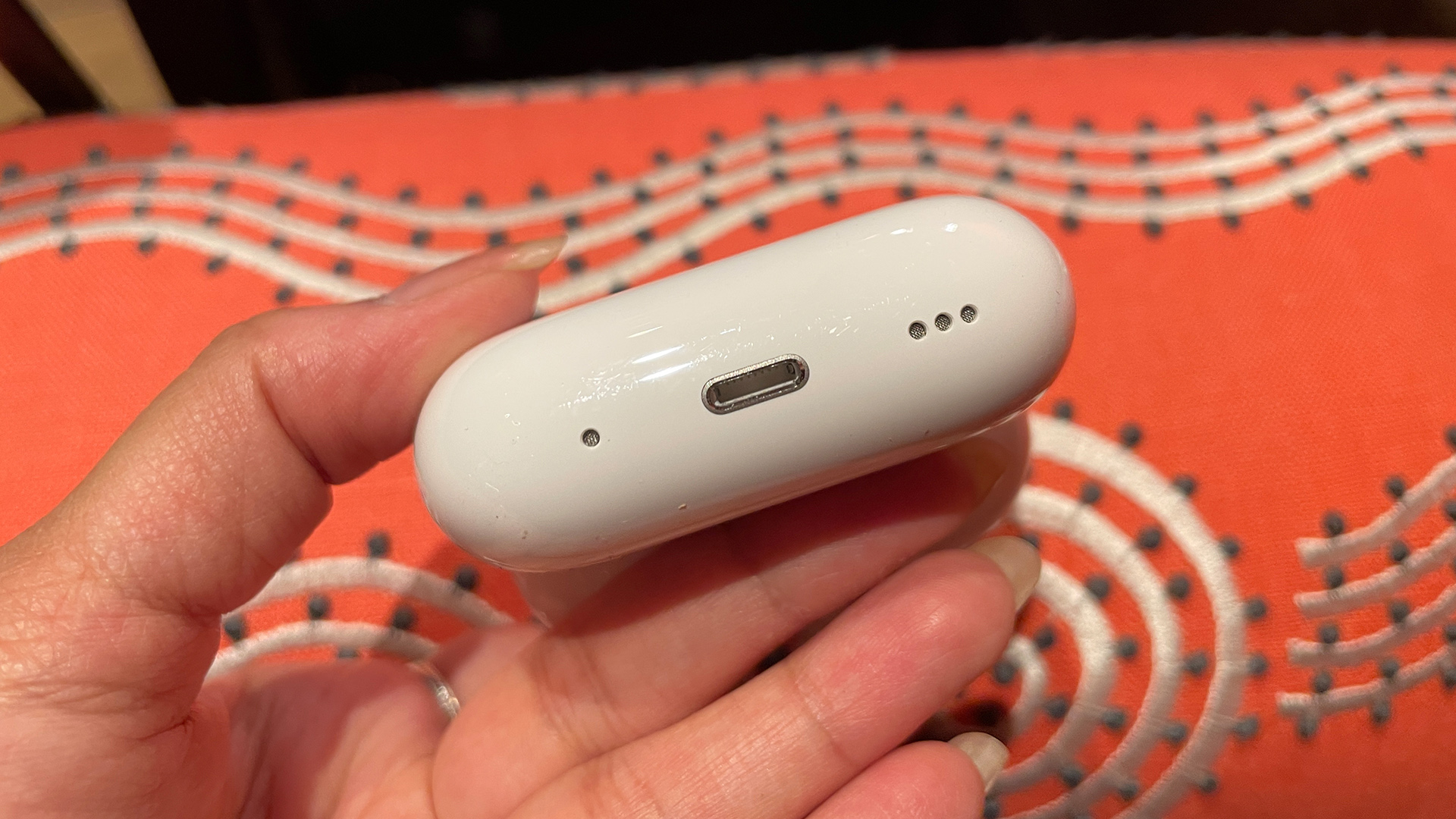
Specifications
Reasons to buy
Reasons to avoid
Apple's in-ear AirPods have always been decent wireless earbuds, but unremarkable. They've picked up quite a number of four-star reviews over the years. But with the AirPods Pro 2, Apple has made a pair of wireless buds that delivers the goods.
How? Noise-cancelling is better, battery life is longer, and you get new features and, more importantly, much improved sound quality. They also cost the same as the original AirPods Pro, which helps.
Fit is very good, and the tweaked design feels a lot less intrusive than some in-ears. Apple has finally added on-bud volume controls, which takes the user experience up a level too.
The noise-cancelling works a treat, while Adaptive Transparency muffles loud noises when letting in ambient sounds. And the sound quality? With weight, detail and a good dose of dynamic subtlety, they are accomplished performers which can go toe-to-toe with the best.
As we said in our review, "Next to the Sony and Bose rivals, Apple is now on par where it once was still playing catch up." And, with rumours suggesting we won't see an AirPods Pro 3 model until 2025, it would appear these excellent Apple buds will be around for a little while yet.
We have tested the AirPods 4 with Active Noise Cancellation and they are a solid option for the money, but if fit isn't an issue our money would still go to the AirPods Pro 2.
Read our full Apple AirPods Pro 2 review

Granted, the AirPods won't appeal to everyone, but as an Apple user I can vouch for the AirPods Pro 2nd Generation, for their entertaining sound quality and the sheer convenience of using them with other Apple devices. Their ability to pair quickly and reliably with an iPhone or MacBook really adds to the user experience and shouldn't be underestimated. And the fact they're the best-sounding in-ear AirPods to date makes them easy to recommend.
Best wireless earbuds for running
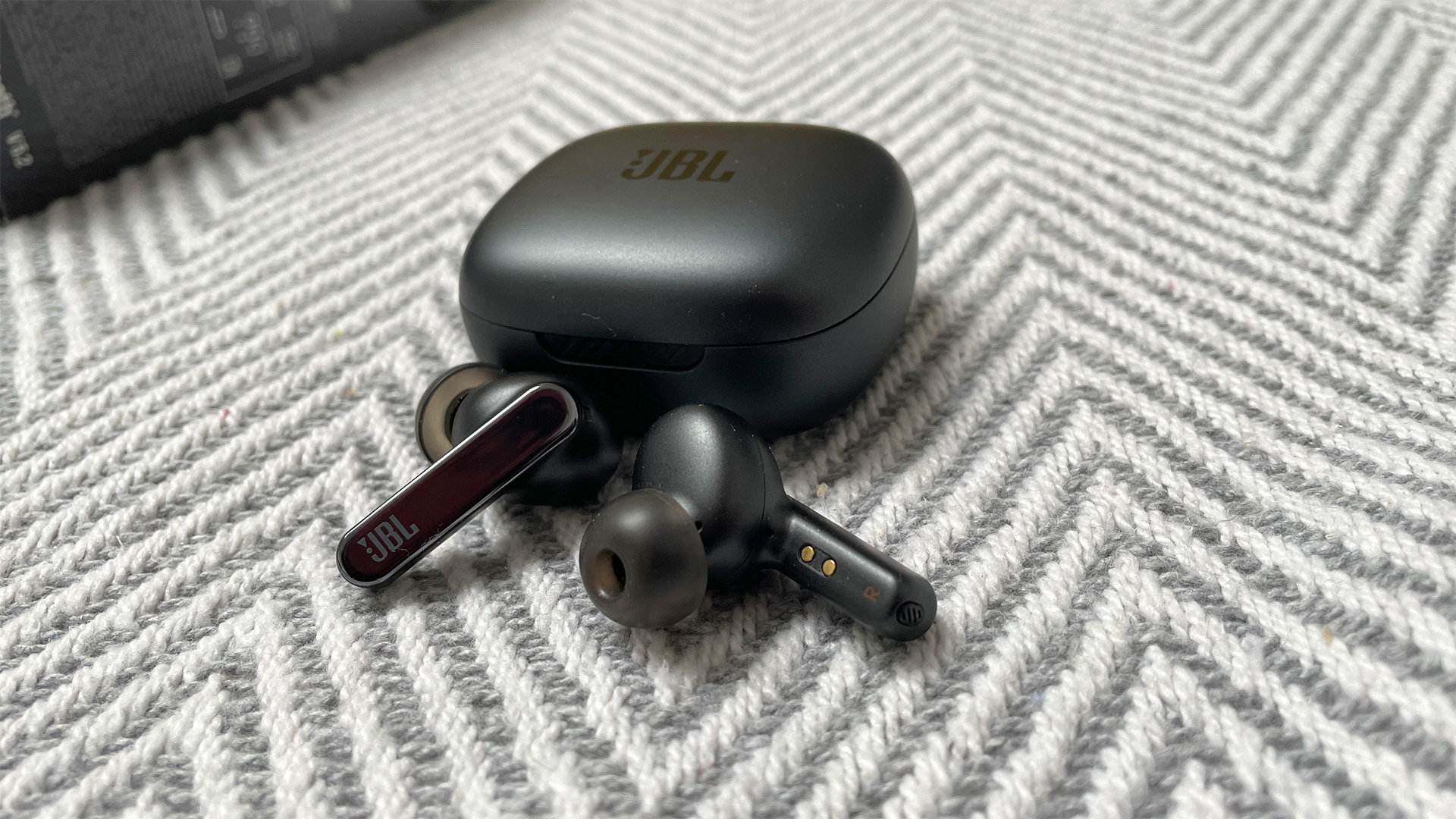
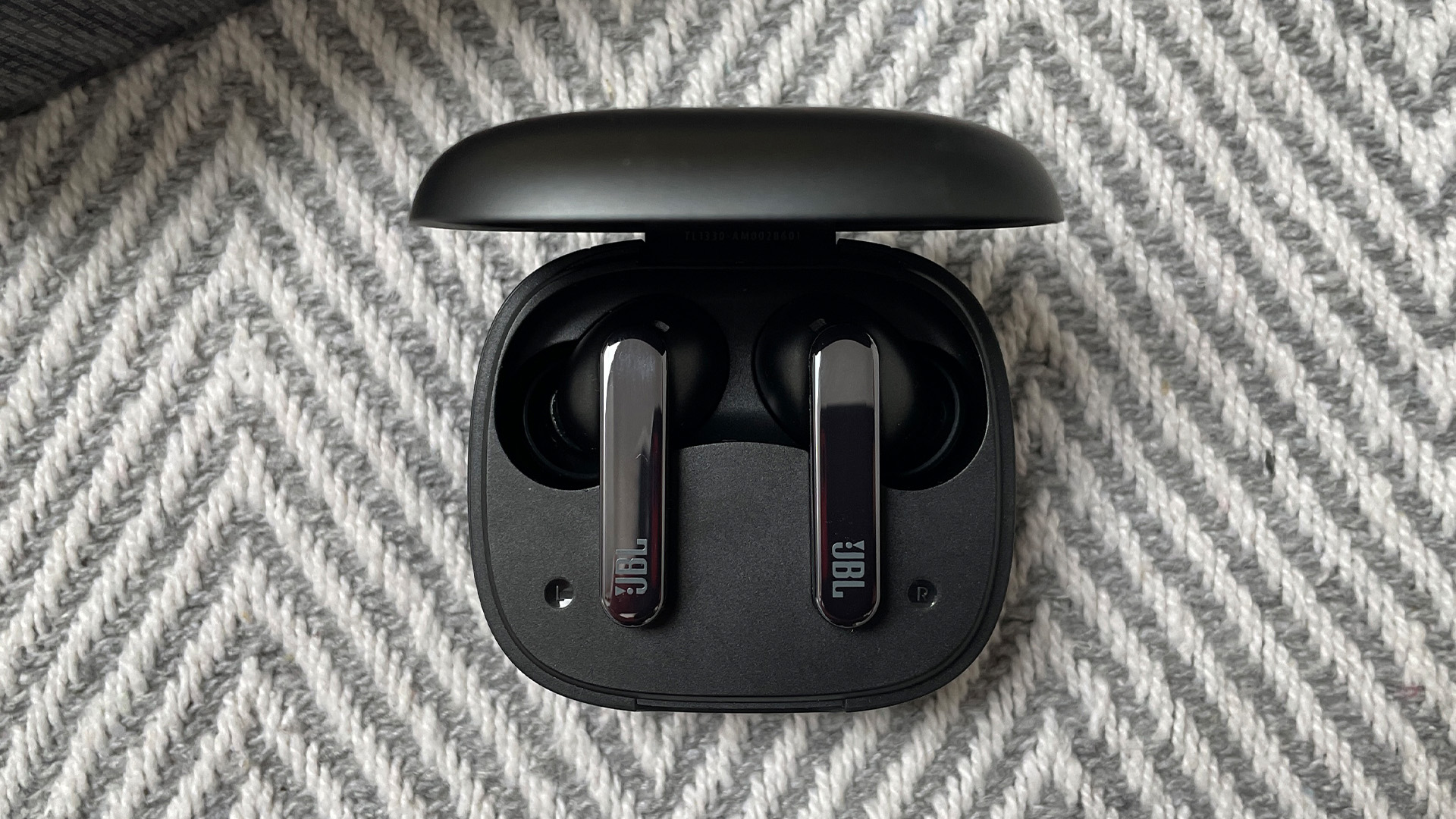
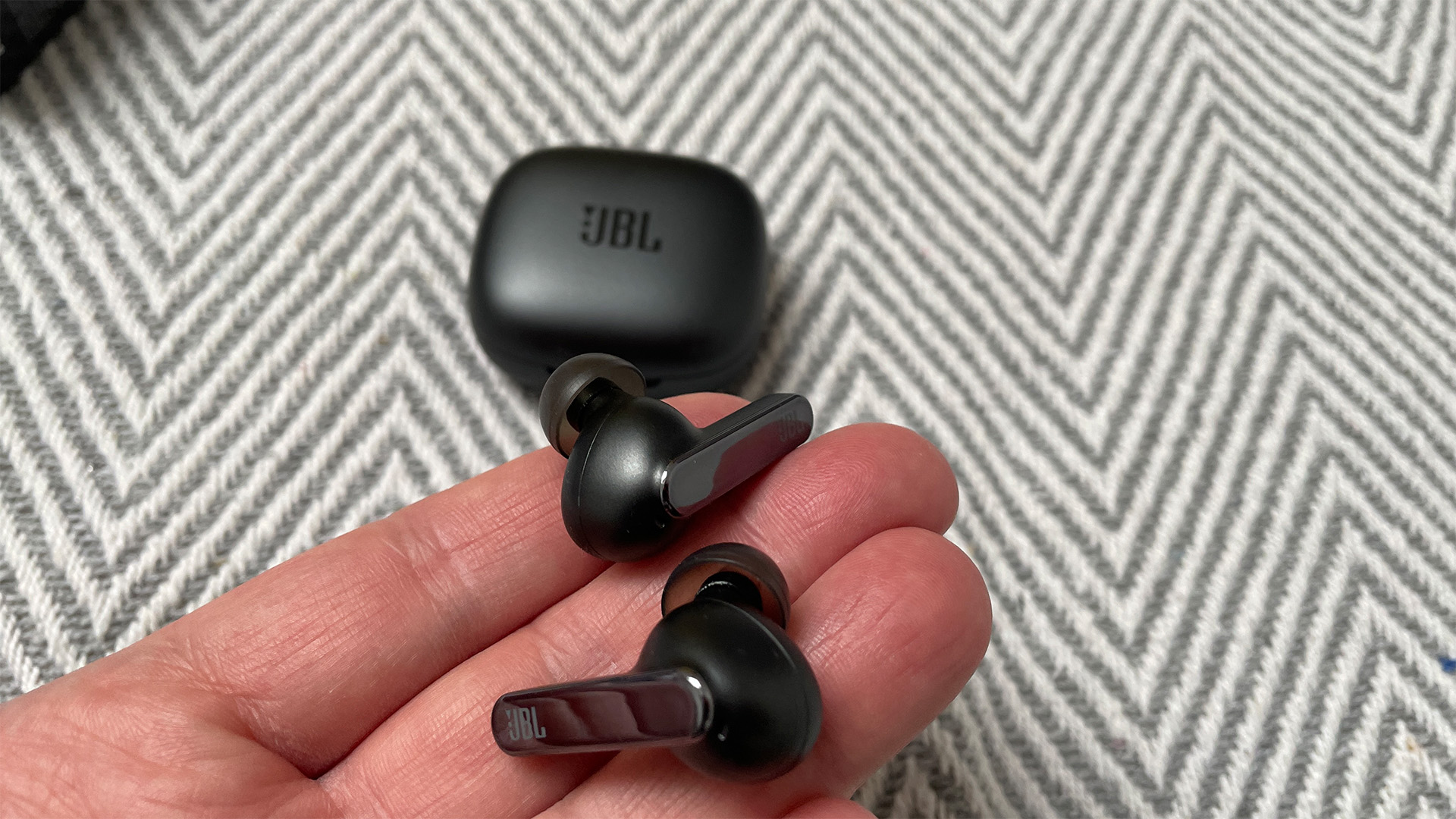
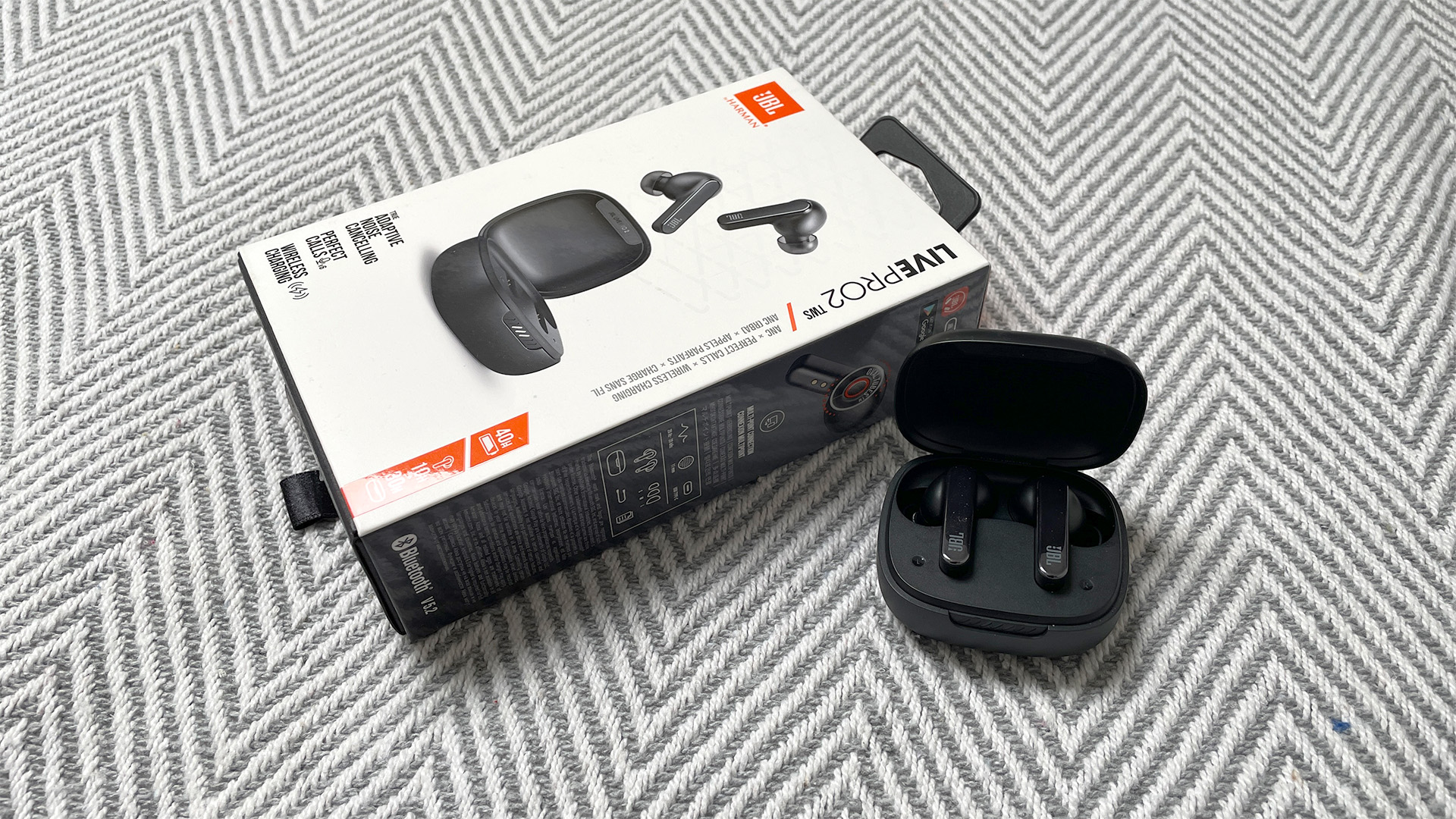
Specifications
Reasons to buy
Reasons to avoid
If you're going to be using a pair of wireless earbuds for running, they need to tick several boxes. They need to fit securely and be comfortable for long periods. You want good noise-cancelling to cancel the grunts and groans of a noisy gym but also a versatile transparency mode that lets through just enough noise when you're outside.
And this is why the JBL Live Pro 2 TWS are included on this list. They do all the above but also deliver five-star sound quality at a hugely competitive price that won't bust your budget.
Build quality is solid enough and they look nice and streamlined. They cram in features you don't normally see at the money too, including wireless charging, IPX5 water-resistance, and Bluetooth Multipoint (which lets you have two devices connected at once). Each charge gets you a very respectable eight hours of playtime, and 30 in total thanks to the charging case.
While it's true that more premium options from the likes of Bose, Sony and Sennheiser are a step up from the JBL, you'll struggle to find a pair of wireless earbuds at this more affordable price point that fit the bill better.
Read the full JBL Live Pro 2 TWS review
Also consider
If you're looking for alternatives to the best wireless earbuds mentioned above, here is a list of models that came close to being included but didn't quite make the final cut. They could be five-star (or sometimes four-star) performers that we think still deserve your consideration. They might even be a better option for certain people under certain circumstances.
Bose QuietComfort Earbuds (2024)
Bose's original QC Earbuds started its line of true wireless ANC in-ears back in 2020 and a couple of generations later they are back with a revised look. They sit just below the QuietComfort Ultra Earbuds and offer a decent chunk of their performance at a cheaper price. They boast better battery life and wireless charging, but the Ultra still have the edge when it comes to sound quality and noise cancelling. Five stars.
Samsung Galaxy Buds 3 Pro: In the same way there are dedicated pairs for iPhone, and Google Pixel owners, Samsung has its own offering in the shape of its Galaxy Buds 3 Pro. They're solid enough and offer a bright, lively sound and good call quality, but lack the refinement and rhythmic ability to trouble the likes of the Sony WF-1000XM5. Four stars.
Apple AirPods 4 with Active Noise Cancellation: If you don't like the traditional in-ear tips of the AirPods Pro 2 then you might get along well with Apple's step-down model. The AirPods 4 don't burrow into your ear in the same way, yet Apple has managed to give these open earbuds surprisingly capable active noise cancelling. Four stars.
Cambridge Audio Melomania M100: if your budget can't stretch to some of the premium models on this page but you want a step up from a budget pair like the Sony WF-C500, then the Melomania M100 could be worth a closer look. They boast 10-hour battery life, a clear, detailed and open sound, plus effective active noise cancelling. That battery life gets boosted to 16 hours with ANC off and you even get a mix of silicone and foam tips to help you get the best seal possible. Four stars.
Sennheiser Momentum True Wireless 4: Sennheiser's premium true wireless earbuds just miss out on a spot at the top of this list, mainly due to the flagship competition from Sony and Bose. They're the company's best premium model to date, however, the Bose QC Ultra Earbuds just edge them in the noise-cancelling department, while the Sony XM5 do similar in the sound quality stakes. But the Sennheisers do sound rich and engaging, are comfortable to use over long periods and offer plenty of customisation options. Five stars.
Sony LinkBuds: if you don't want your wireless earbuds burrowing into your ears, these clever Sonys offer something slightly different. They use a ring driver which slides into the bottom part of your ear and fires music into your ear's opening. The result is a very open and natural sound with good levels of detail. They're also comfy to use over long periods. We don't think they have the universal appeal of some of the models at the top of this page but they are an interesting alternative. Four stars.
Google Pixel Buds A-Series: The AirPods Pro 2 are most likely to appeal solely to iPhone users, but what about Google Pixel owners? Well, this is where the Pixel Buds A-Series come in. They produce an impressive sound for an extremely reasonable price. We wouldn't say they're the best wireless earbuds for Android, but they're a viable alternative to some of the big hitters on the list above. They're also comfortable, easy to use and easy to pair with Android devices. Five stars.
Wireless earbuds coming soon
Sony WF-C710N
Sony has yet to officially announce this new model, but recent leaks suggest this will only be a matter of time. It appears as though the potential replacement will have a tweaked design that introduces touch controls and updated noise-cancelling microphones. Battery life is allegedly getting a boost too.
Sony WF-C700N sequel leak teases improved ANC and battery, but will they get better codec support?
Things to consider
One thing you will need to bear in mind is that everyone's ears are different, which means that whether or not a pair of earbuds are comfortable tends to come down to personal preference. We can give a bit of guidance on comfort once we've tested them, but there's no substitute for sliding them into your own ears. If you've got ears on the shallow side, for example, we'd go for a physically smaller or flatter earbud that won't stick out much.
After comfort, you'll want to think about when and where you're going to use them. Do they need to be water-resistant, sport-friendly earbuds or do they just need to pair to your smartphone and survive your daily commute?
Read more
Tied to this, of course, are other factors such as battery life. The best wireless earphones all have enough battery life for the average listening session but some do last longer than others. Most pairs will have a combined earbud and case battery life of 18 hours or more, though, so you shouldn't be caught out during long-haul flights, though some people might care for a longer earbud battery life for continuous listening without having to pop them into the case to charge.
It's also worth noting the number of hours you get can vary depending on what other features you have enabled and, to a certain degree the volume you listen at and the quality of the files you listen to. Don't forget that wireless earbuds come with charging cases to keep them topped up between outings.
Active Noise Cancellation (ANC) can increase battery drain, but we think it can come in very handy if you want a more private listening experience, and some of the top pairs we've reviewed boast excellent noise-cancelling (just bear in mind that it won't be as good as the ANC you get from a good pair of over-ear headphones). Similarly, some sound processing modes can take a little bit extra out of your battery, but these can usually be turned off.
The flip side of ANC is what a lot of brands refer to as a 'transparency mode'. This does completely the opposite and allows outside noise in, so you can hear your surroundings. We find this mode allows you to hear announcements better if you're on a train or plane, for example. Different earbuds allow for different levels of transparency so you can fine-tune for different listening situations.
We think other features you might want to consider include touch controls, which can come in handy if you want to skip tunes or change volume without having to take your phone out of your pocket. Many modern pairs also offer voice control via personal assistants like Amazon Alexa, Google Assistant and Siri.
If you're feeling a little overwhelmed by the amount of choice out there, don't be. You'll find the best true wireless earbuds to have passed through the What Hi-Fi? test rooms (as detailed below). And if you want a bargain, don't forget to check out our pick of the best wireless earbuds deals too.
Our testing process
How we test wireless earbuds
Why you can trust What Hi-Fi?
Before we start our listening tests, we first experiment with any tips provided to make sure we've got a perfect seal. This ensures that sound quality (particularly bass) isn't affected and we can also evaluate the level of comfort on offer too.
We'll also start with a full charge and see how accurate battery life claims are and just how it's drained during day-to-day use.
Although we have dedicated testing facilities in London, Reading and Bath, the bulk of our true wireless earbuds testing happens outside those facilities, whether that's on the street, on public transport or in our busy office.
It's only when nailing down the finer details of audio quality that we head for quieter environments where we compare the wireless earbuds we're testing to price comparable models and current class-leaders at the money. This gives us a chance to come to solid conclusions and peg each pair on sound quality.
Obviously, testing ANC wireless earbuds requires quite the opposite – here we venture outside to put noise-cancelling algorithms through their paces and also test any transparency mode to see how well it works in different environments.
We'll also test the call quality of the earbuds, to make sure the wearer can be heard in both calm and windy conditions (weather permitting, of course).
As with all headphones, we run wireless earbuds in for several hours before evaluating sound quality. We'll also download and fire up any Android/iOS apps that are available that can affect the user experience. How easy is it to use, what features does it offer, how useful are they and how well are they executed?
All our review verdicts are agreed upon by the team rather than an individual reviewer to eliminate any personal preference and to make sure we're being as thorough as possible. Neither PR companies nor our sales team have any input into our reviews at any stage of the process. We are proud of having delivered honest, unbiased reviews for decades.
F.A.Q
Do you need wi-fi to use wireless earbuds?
In a word, no. Wireless earbuds use Bluetooth technology to receive audio wirelessly. We can’t think of a single pair of wireless earbuds we’ve tested over the years that work over wi-fi (and that’s a lot!). The only benefit of using wi-fi would be to use the extra bandwidth to beam higher-quality, less compressed music files, but many wireless earbuds manufacturers seem happy to use codecs such as aptX HD and LDAC to increase the quality when using compatible sources, i.e. smartphones and tablets.
Do wireless earbuds work with any phone?
As long as your phone has Bluetooth, then in theory you should be able to use any pair of wireless earbuds with it. Bear in mind, though, that some wireless earbud manufacturers also make smartphones and it’s not unusual for them to include extra features that only work if your phone and earbuds are from the same brand. For example, you’ll get a more seamless user experience from the AirPods Pro 2 if you partner them with an iPhone than you would, say a Samsung Galaxy smartphone.
What are the best wireless earbuds that won't fall out?
Some wireless earbuds, like the Bose QuietComfort Ultra Earbuds, have wing tips to help keep them secure, and during testing we have found this works extremely well. But, everyone's ears are different, so a pair of wireless earbuds that fit great for one person might not fit great for another. This is why getting the right fit is so important, so make sure you experiment with the different sizes and styles of eartip you get in the box. You might also find some wireless earbuds are just too big for your ears. Some slightly heavier, bigger and bulkier designs might not sit well or be supported well in smaller ears and ear openings.
Which wireless earbuds have the best sound quality?
It really depends on your budget and how much you have to spend. Our entry-level pick of earbuds would be the Sony WF-C500 which are a brilliant pair of budget buds, or the next-model-up WF-C700 if active noise cancellation is a must and your budget can stretch a little further.
At the premium end of the Bluetooth earbuds market, you're spoilt for choice – though the standout, class-leading models are currently the Sony WF-1000XM5, Bose QuietComfort Ultra Earbuds and Apple AirPods Pro 2.
Are cheap wireless earbuds as good as expensive ones?
In our opinion, the best expensive pairs of wireless earbuds do sound better than the best cheap pairs. You get a clear step up in terms of sound quality with the expensive pairs uncovering more detail, delivering even greater dynamics and producing a more polished and refined overall performance.
Many budget models don't have the same spread of features as more expensive designs and might be missing key things like active noise-cancelling. That's not to say all expensive pairs will sound better. If sound quality isn't up to scratch it's very likely a more affordable five-star model which we have tested could be the better buy.
What are the best wireless earbuds for Zoom meetings?
Whether you're taking voice or video calls you want a pair of true wireless earbuds with a good microphone set-up. Some premium pairs even have special technology that helps to emphasise voices so your voice should come through even clearer. Pairs we would recommend include the Sony WF-C700N at the affordable end of the spectrum and the Sony WF-1000XM5, Bose QuietComfort Ultra Earbuds and Apple AirPods Pro 2 at the more premium end.
What is the difference between cheap and expensive wireless earbuds?
The main differences tend to centre around build quality, features and performance. That's not to say you can't get cheap Bluetooth buds that don't sound great for the money or have a solid feature set, just like the Sony WF-C700N. In our testing experience, the best cheap earbuds can certainly outperform some more expensive pairs.
However, the very best expensive pairs tend to offer better build quality, higher quality components, a more sophisticated sound and even more accomplished features. Noise cancelling and call quality can be more advanced, for example, but the biggest differences are in sound quality. You can hear more detail, and experience greater dynamics, and the very best pricey pairs, such as the Sony WF-1000XM5 and Bose QuietComfort Ultra Earbuds, offer a greater level of sonic refinement.
Recent updates
- 16th January: checked pricing and availability of all earbuds on the list. We’ve awarded five stars to the Technics EAH-AZ100 and added them as a new “best premium wireless earbuds” entry. We have also tested the Bowers & Wilkins Pi6 and awarded them four stars, but they don’t make the list.
- 2nd December: checked pricing and availability of the earbuds in this list. We've awarded five stars to the Bose QuietComfort Earbuds (2024) and added them to the 'also consider' section of the page. We have also tested the Sony LinkBuds Fit and JBL Tour Pro 3. Both models received four stars during testing but haven't made it into our round-up.
- 21st November: No new models to add, but we have recently reviewed the Sony LinkBuds Fit which gained four stars during testing.
- 21st October: All What Hi-Fi? Award-winners for 2024 have been flagged on the page. We’ve tested the Apple AirPods 4 with Active Noise Cancellation and added them to the also consider section. We’ve also tested the Sony WF-C510 which replace the WF-C500 as the best for battery life. We've also added the new Bose QuietComfort Earbuds and Sony's new LinkBuds models to our ‘coming soon’ section.
- 13th September: Checked availability and pricing, added Bowers & Wilkins Pi8 as ‘best for audiophiles’, mentioned Sony WF-C510, Apple AirPods 4 and JBL Pro Tour 3 as new models to market, removed Bose QuietComfort Earbuds II from the ‘also consider’ section.
- 8th August: We've removed the Panasonic RZ-S500W from our 'also consider' section due to lack of availability and mentioned the new Samsung Galaxy Buds 3 Pro. We've also added a test track for you to try at home.
- 1st July: Checked the availability and pricing of entries, removed JBL Reflect Flow Pro, replaced by JBL Live Pro 2 TWS
- 29th May: We tested two new models since our last update, the Sennheiser Momentum Sport which we rated at three stars and the Final ZE8000 MK2 which we rated four stars. Neither pair made our list.
- 22nd April: added mention of recent EarFun Air 2 review, Cambridge Audio Melomania M100 and Google Pixel Buds A-Series added as a pair to consider
- 21st March: revised 'How to choose' section, added Sennheiser Momentum True Wireless 4 as an also consider, added new F.A.Q. entry
- 29th February: added product galleries, added also consider section, added recent updates section, added top tip
- 18th January: added more F.A.Qs, updated how to choose and how we test sections
Today's best wireless earbuds deals
Get the What Hi-Fi? Newsletter
The latest hi-fi, home cinema and tech news, reviews, buying advice and deals, direct to your inbox.
Andy is Deputy Editor of What Hi-Fi? and a consumer electronics journalist with nearly 20 years of experience writing news, reviews and features. Over the years he's also contributed to a number of other outlets, including The Sunday Times, the BBC, Stuff, and BA High Life Magazine. Premium wireless earbuds are his passion but he's also keen on car tech and in-car audio systems and can often be found cruising the countryside testing the latest set-ups. In his spare time Andy is a keen golfer and gamer.
